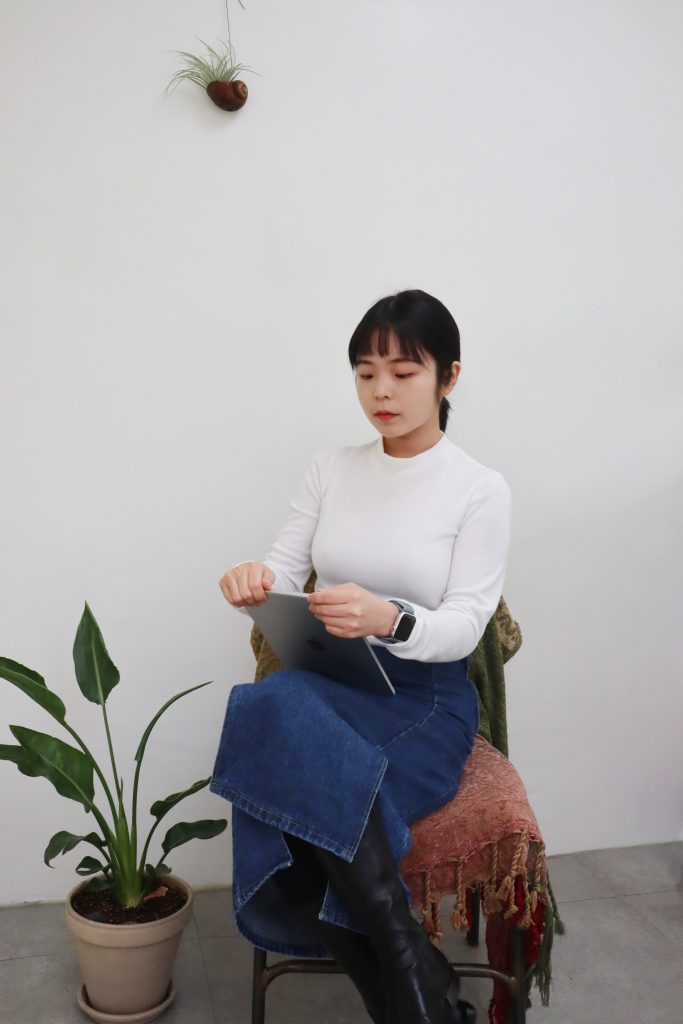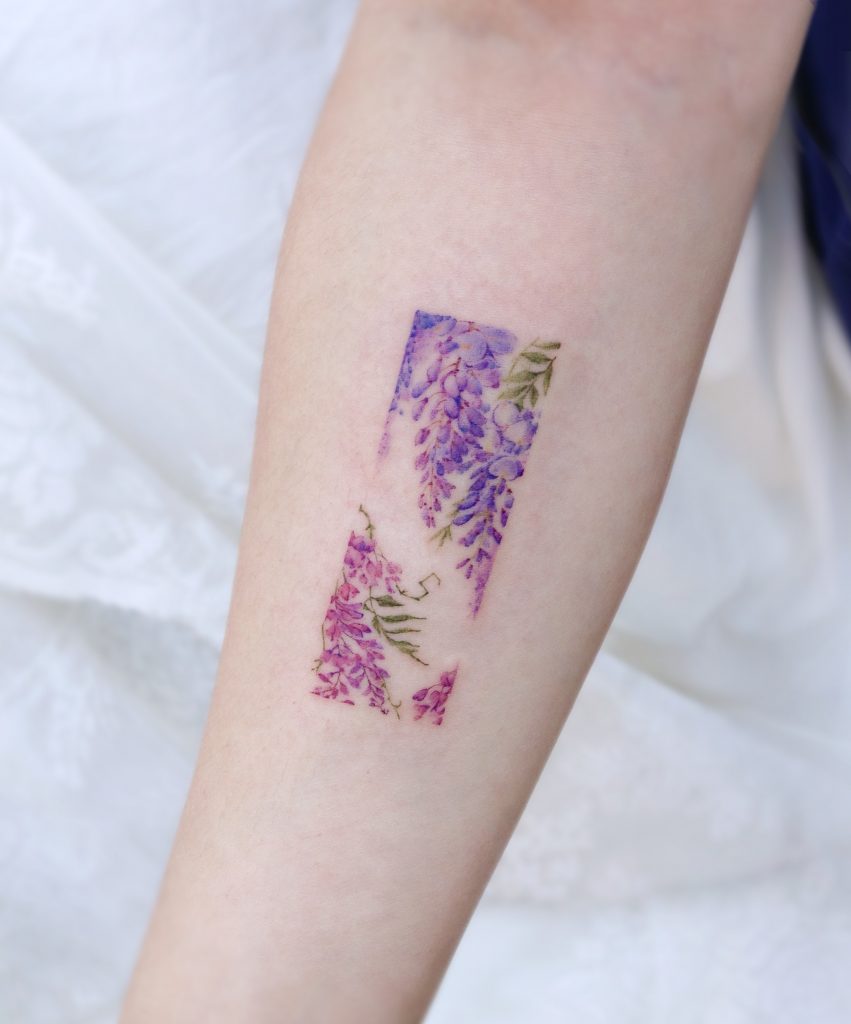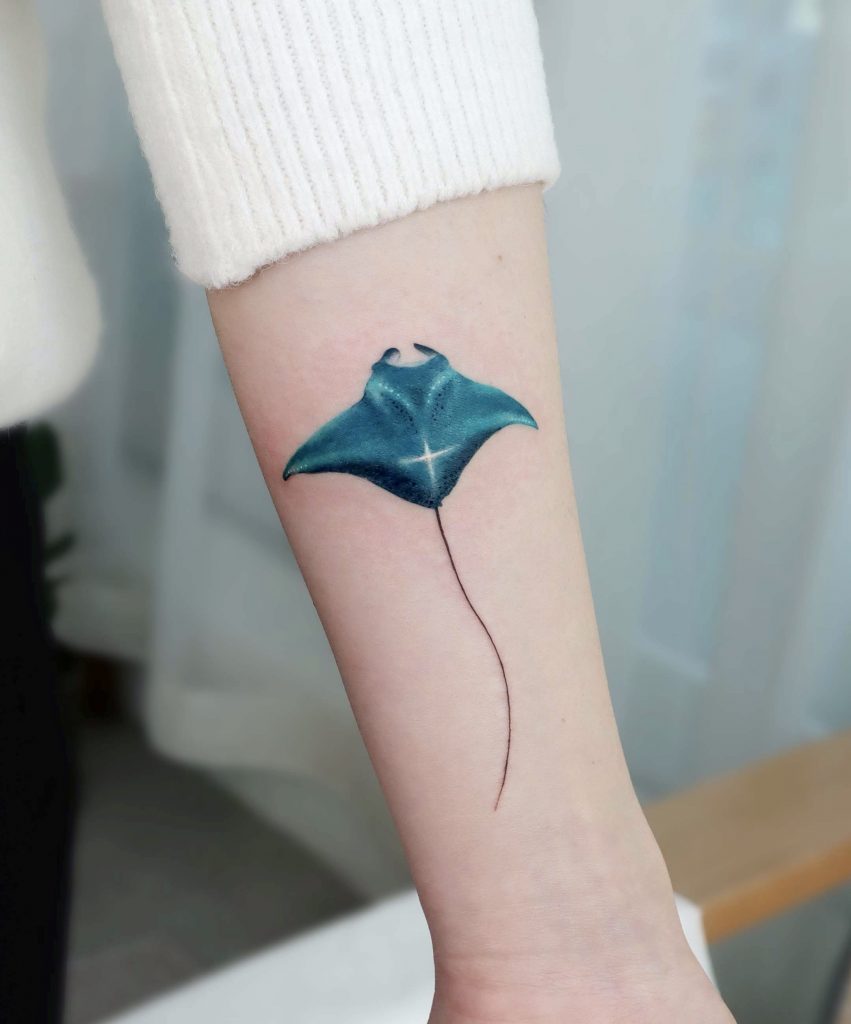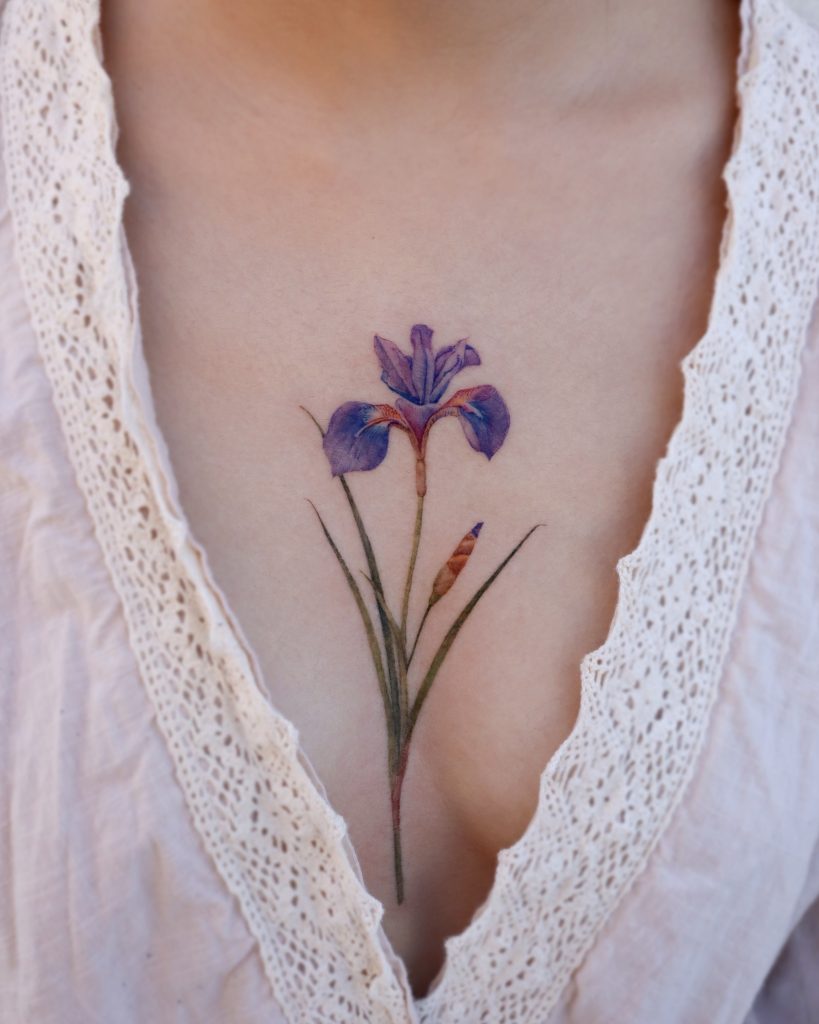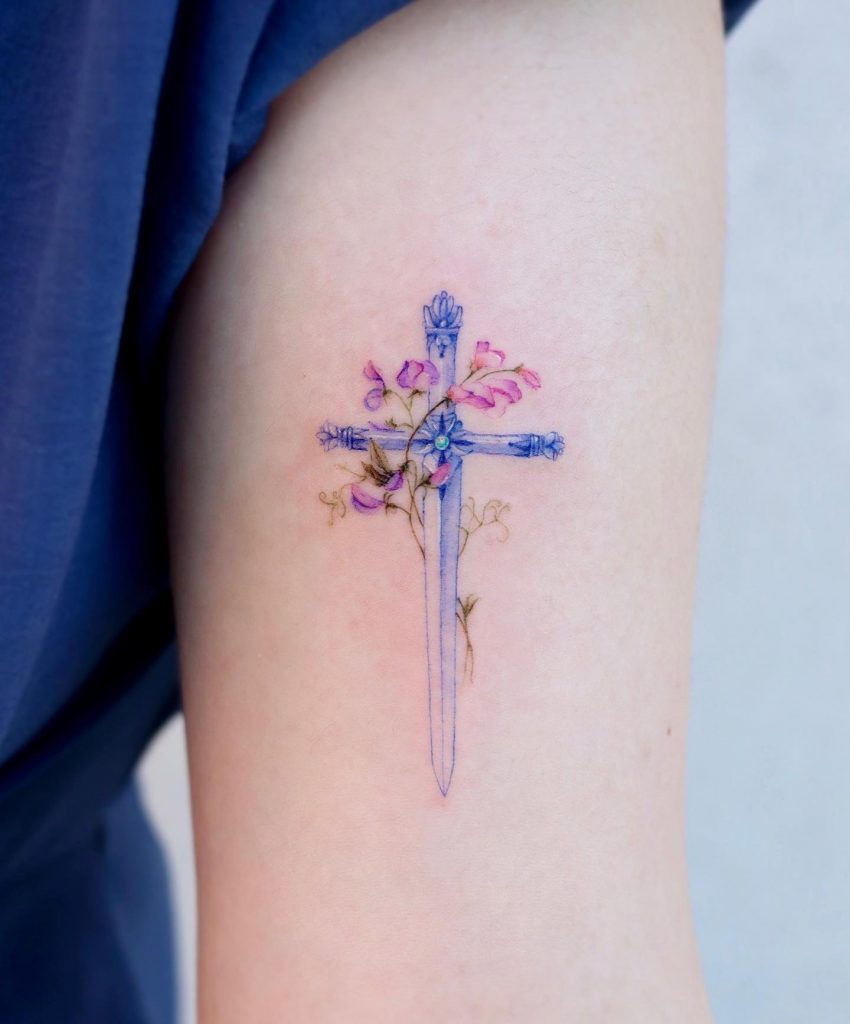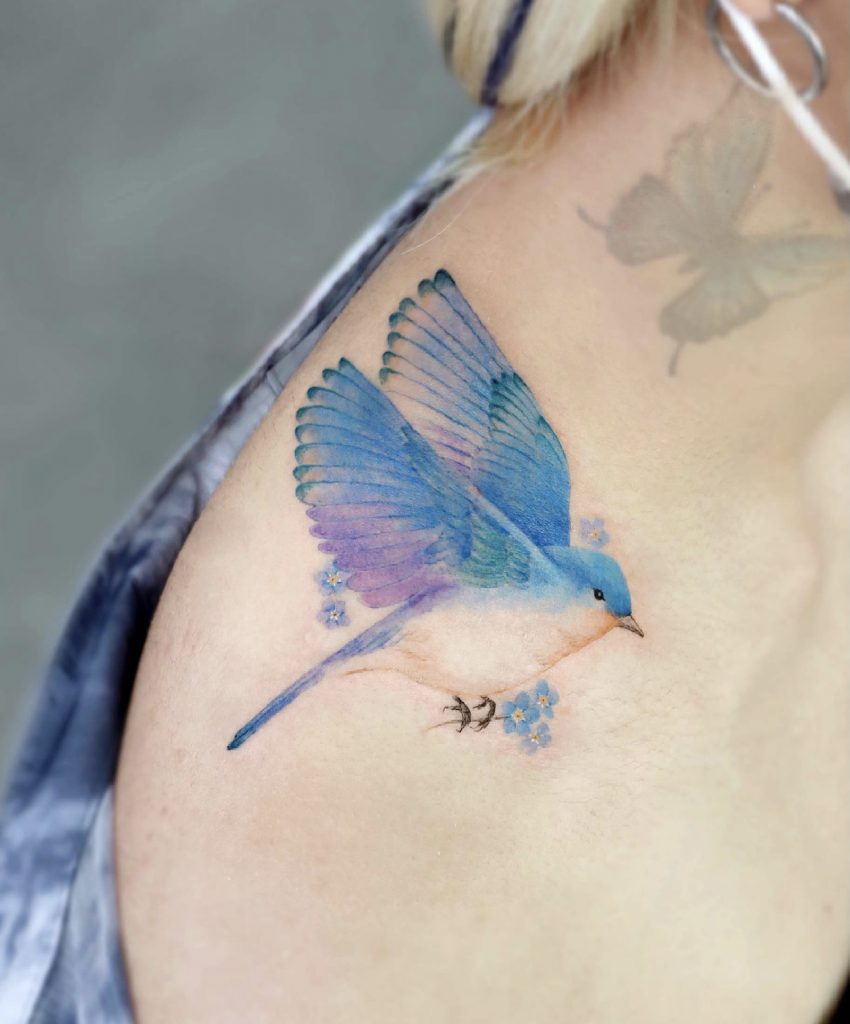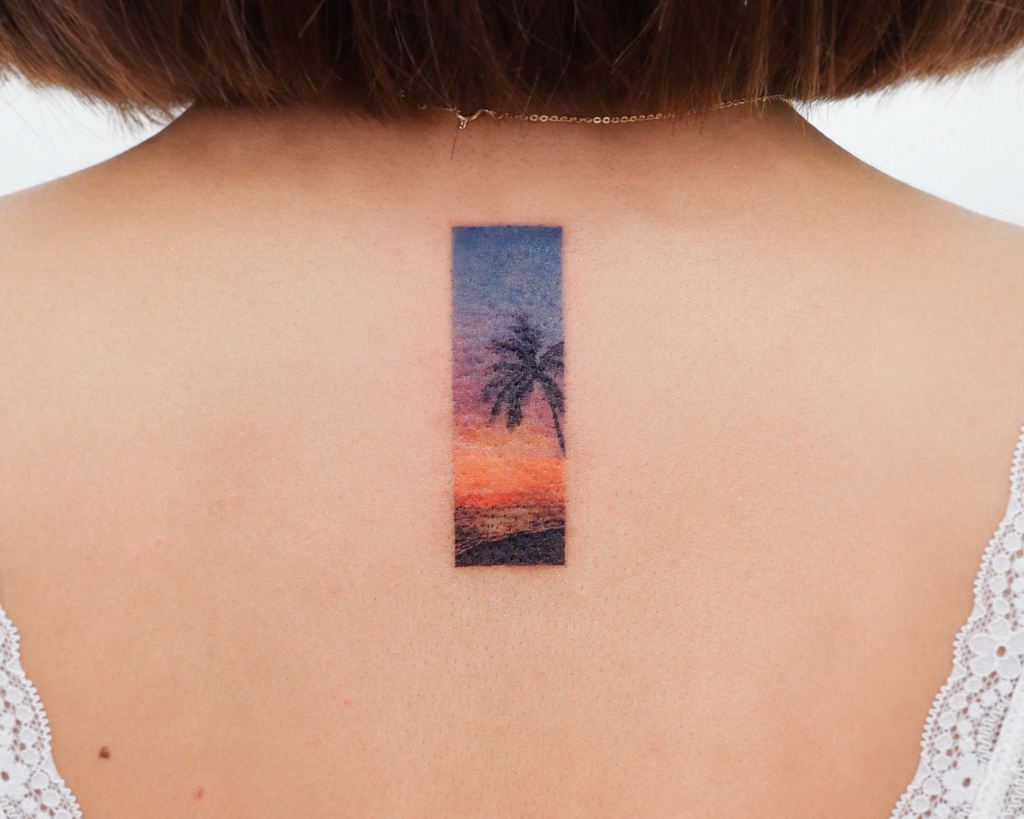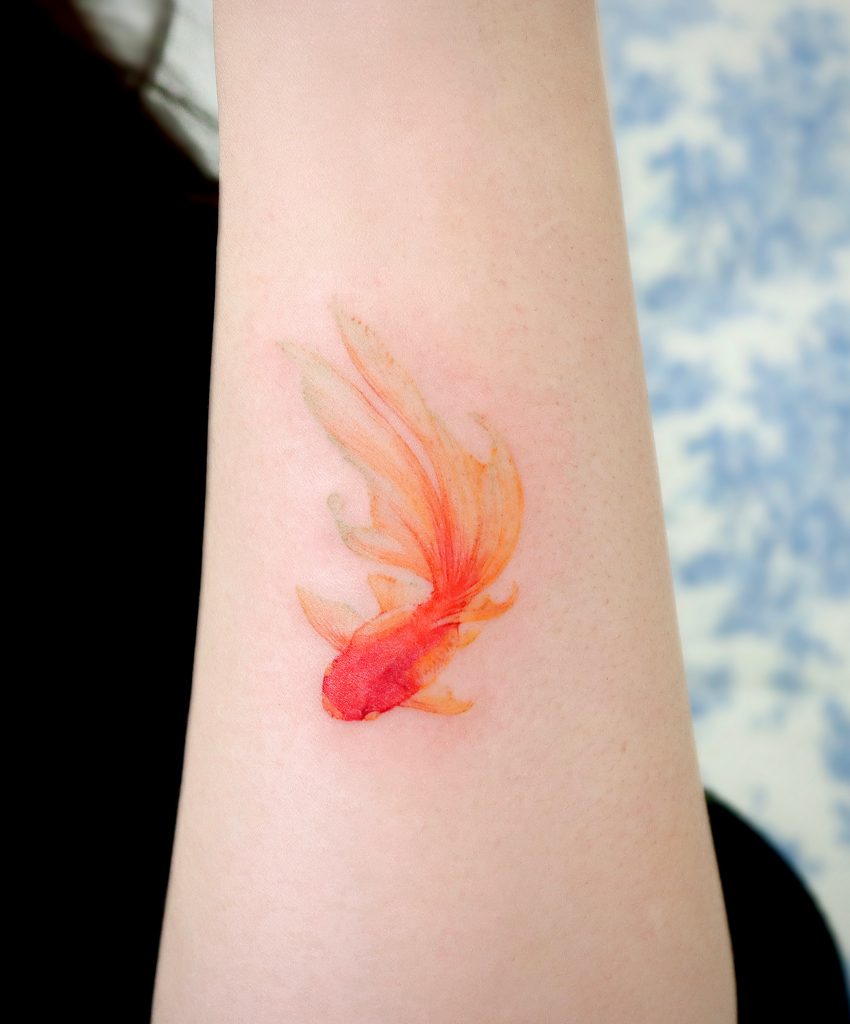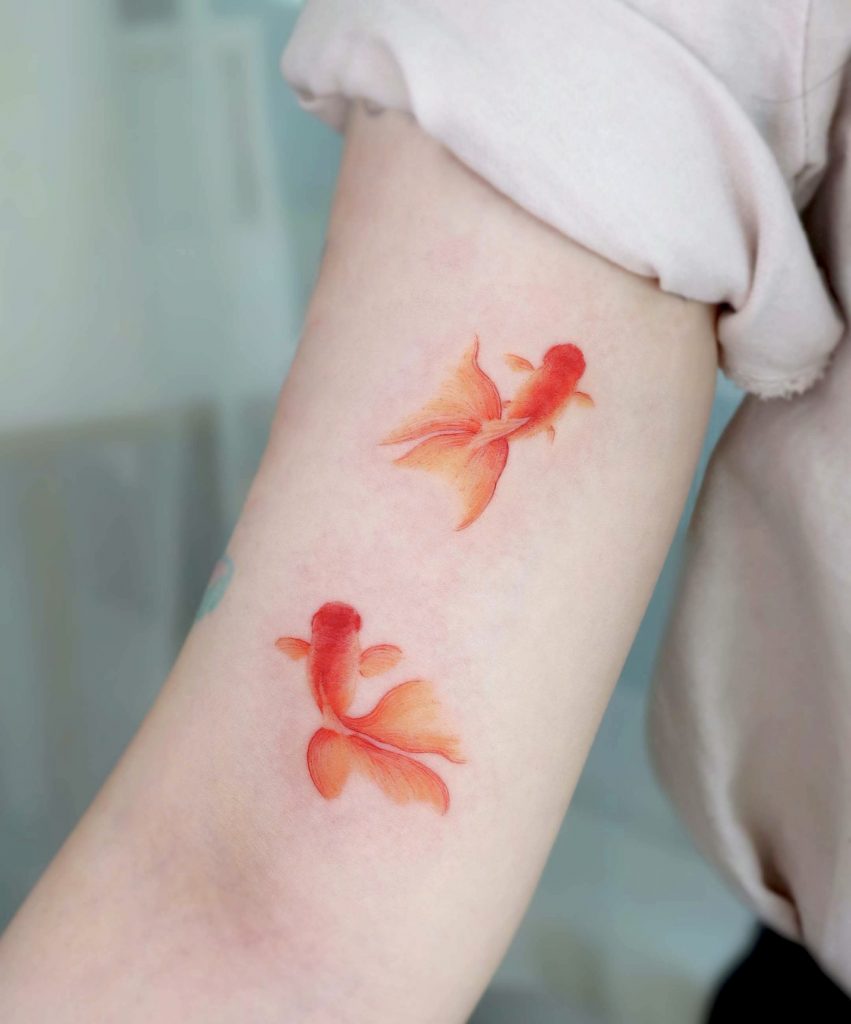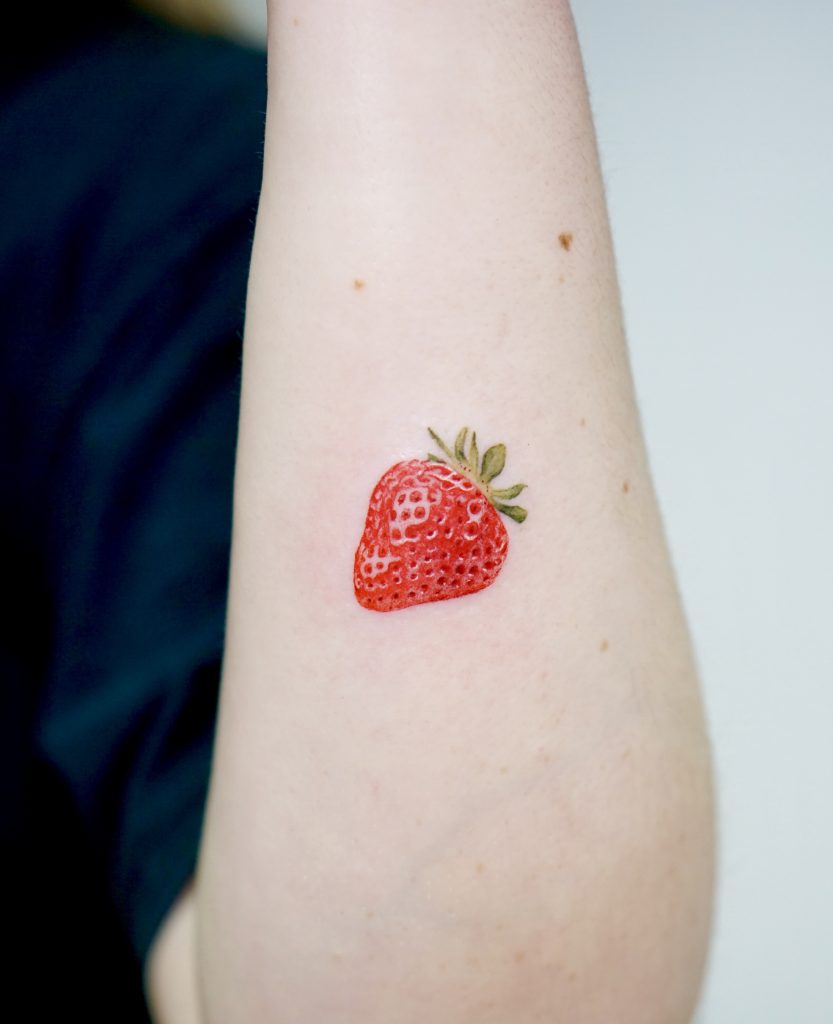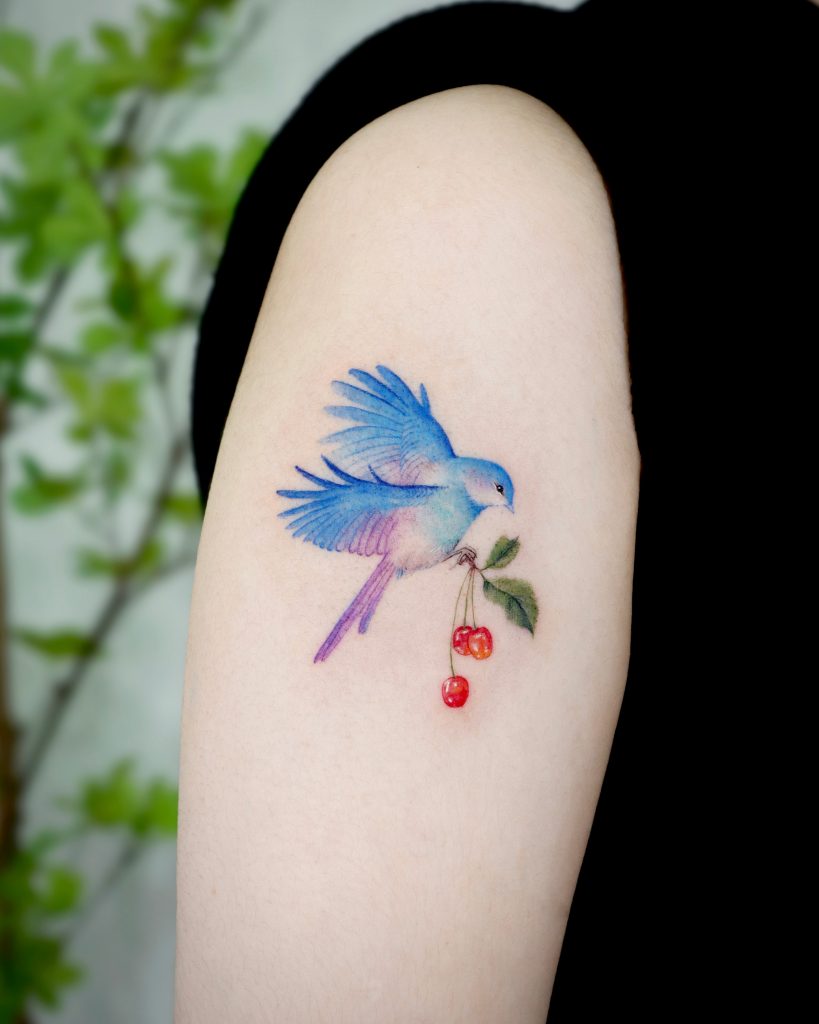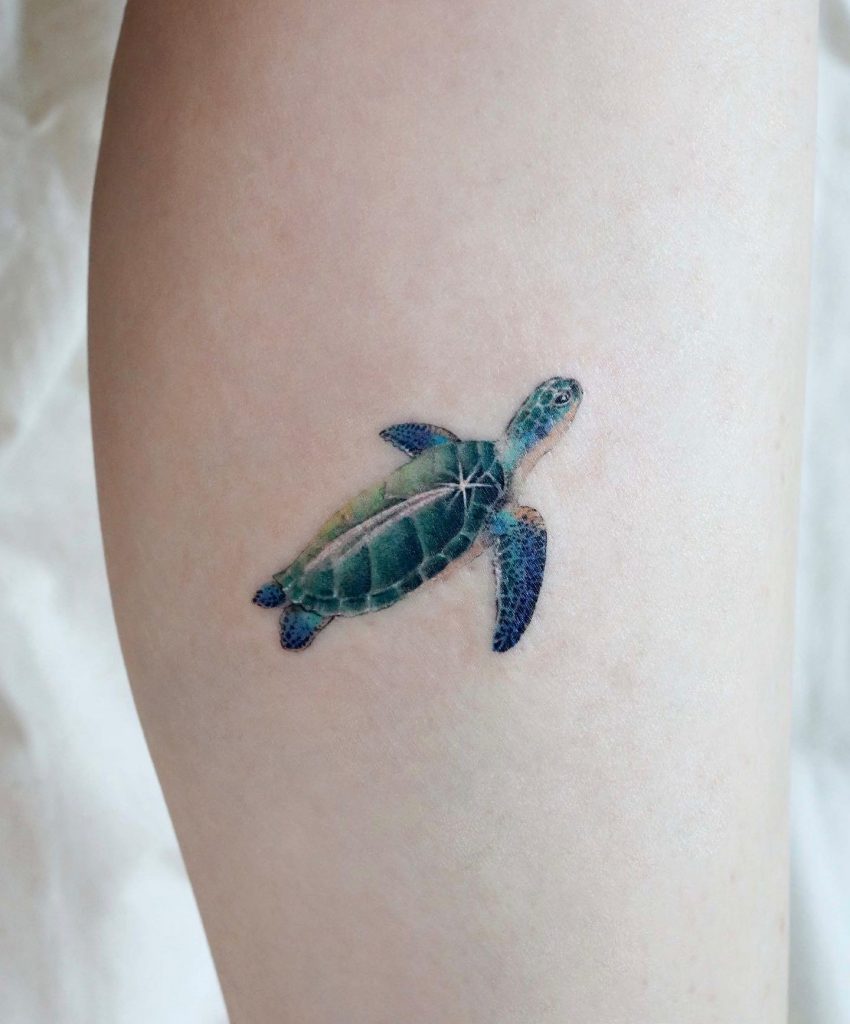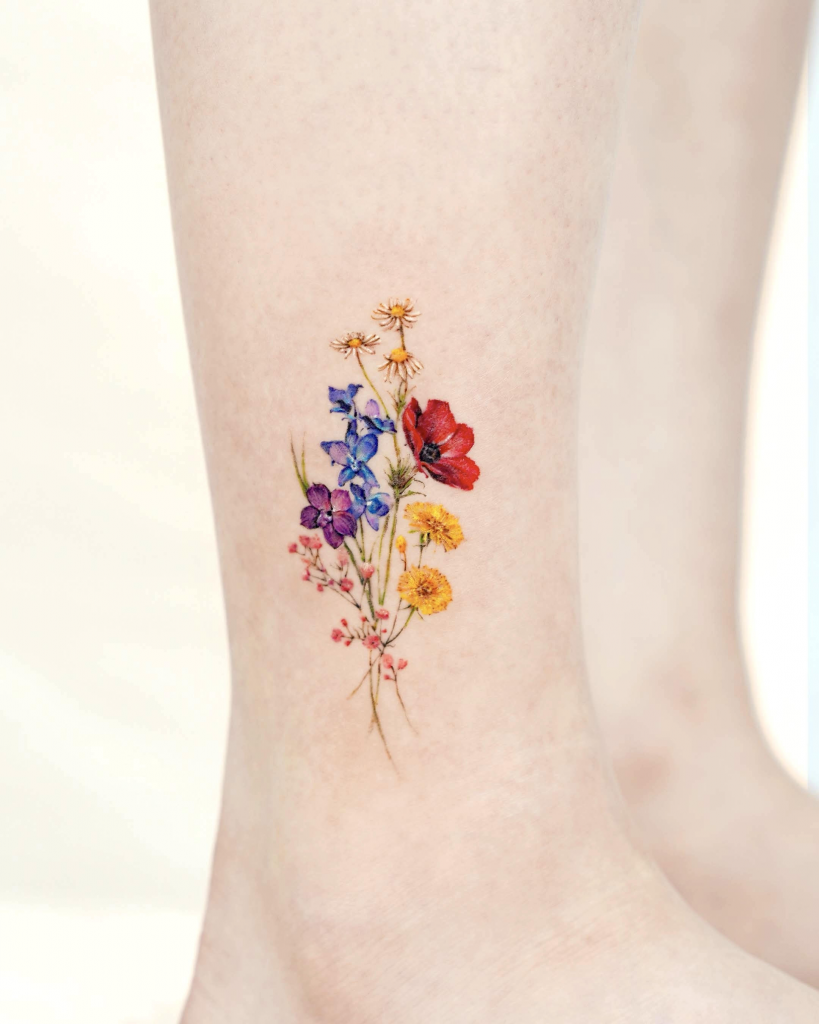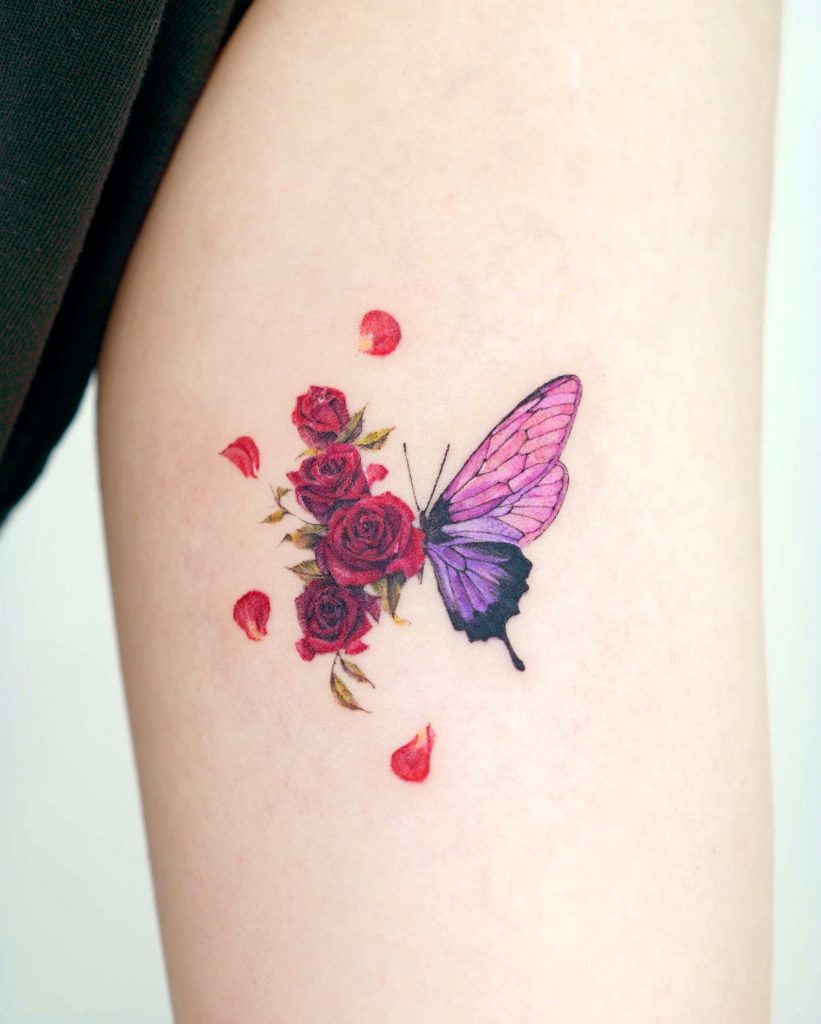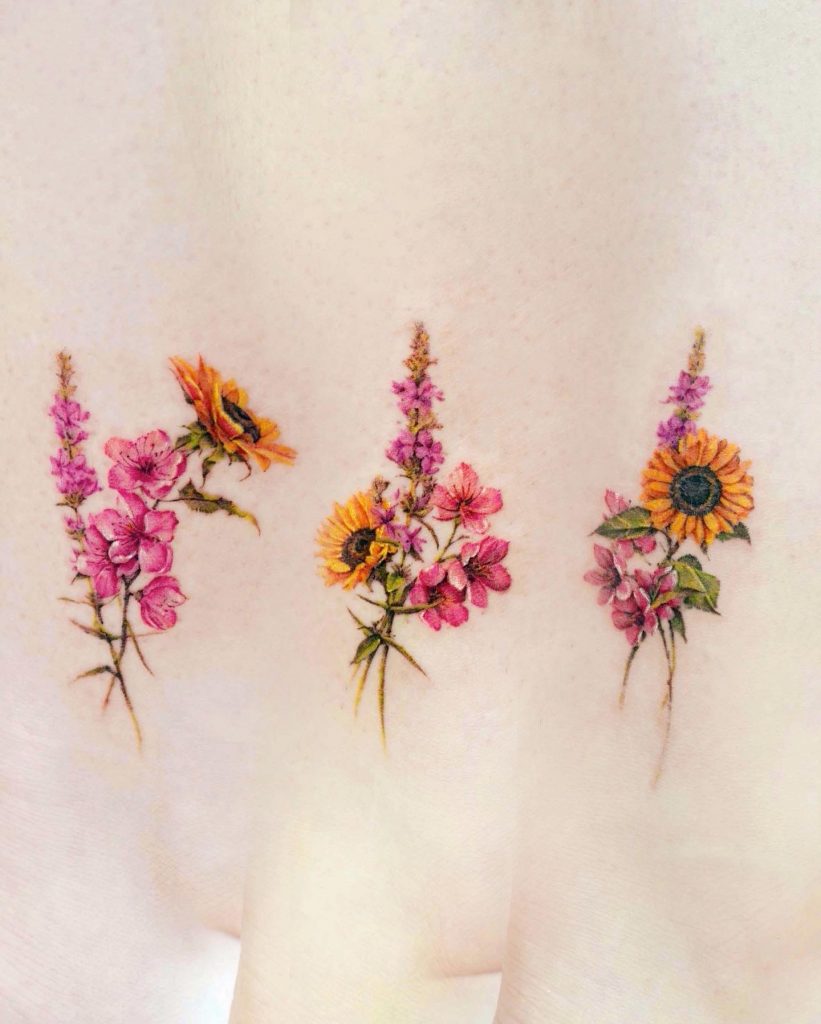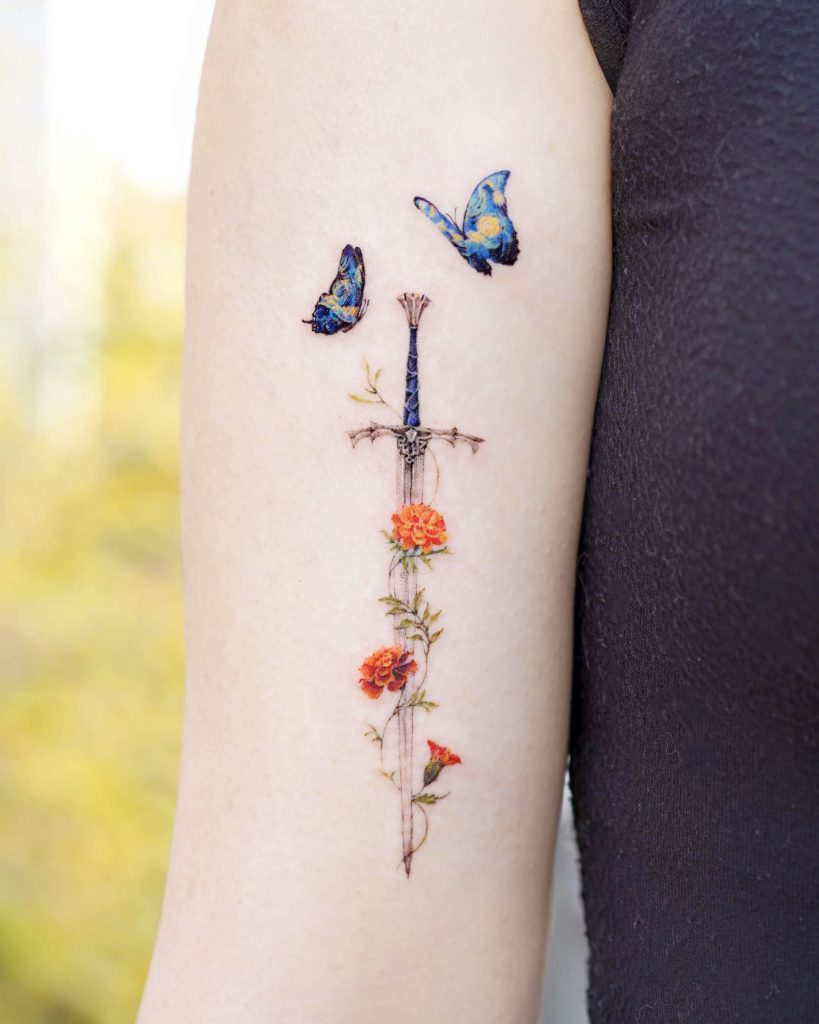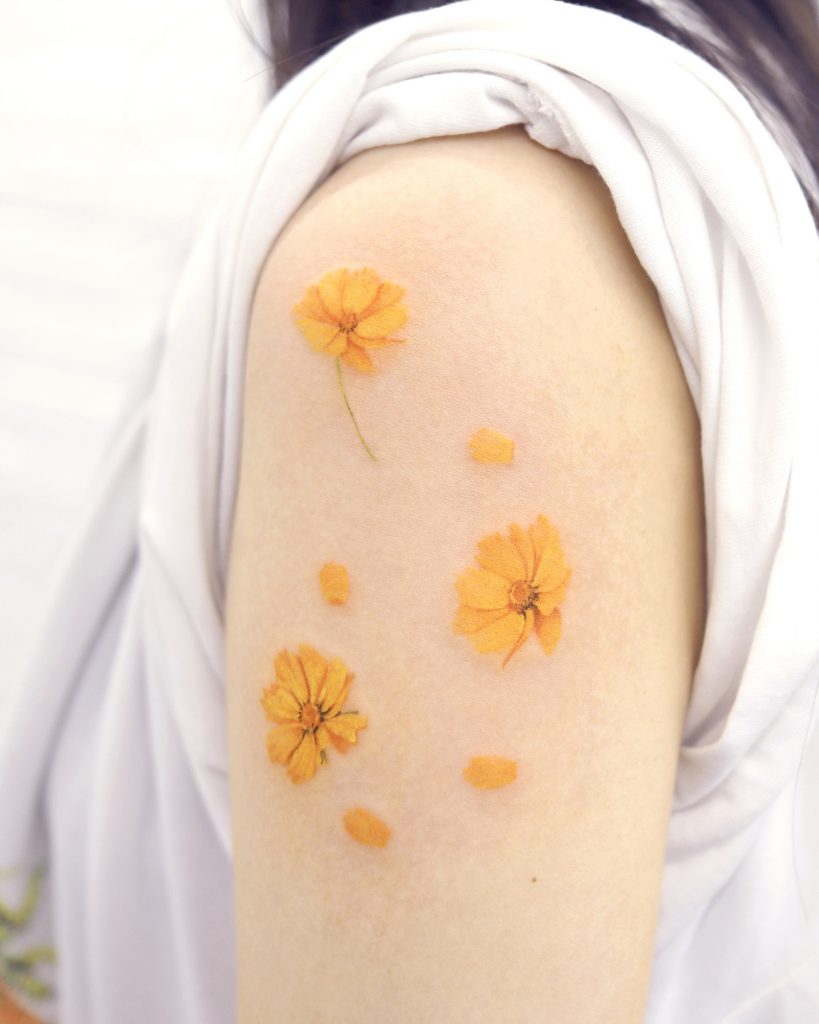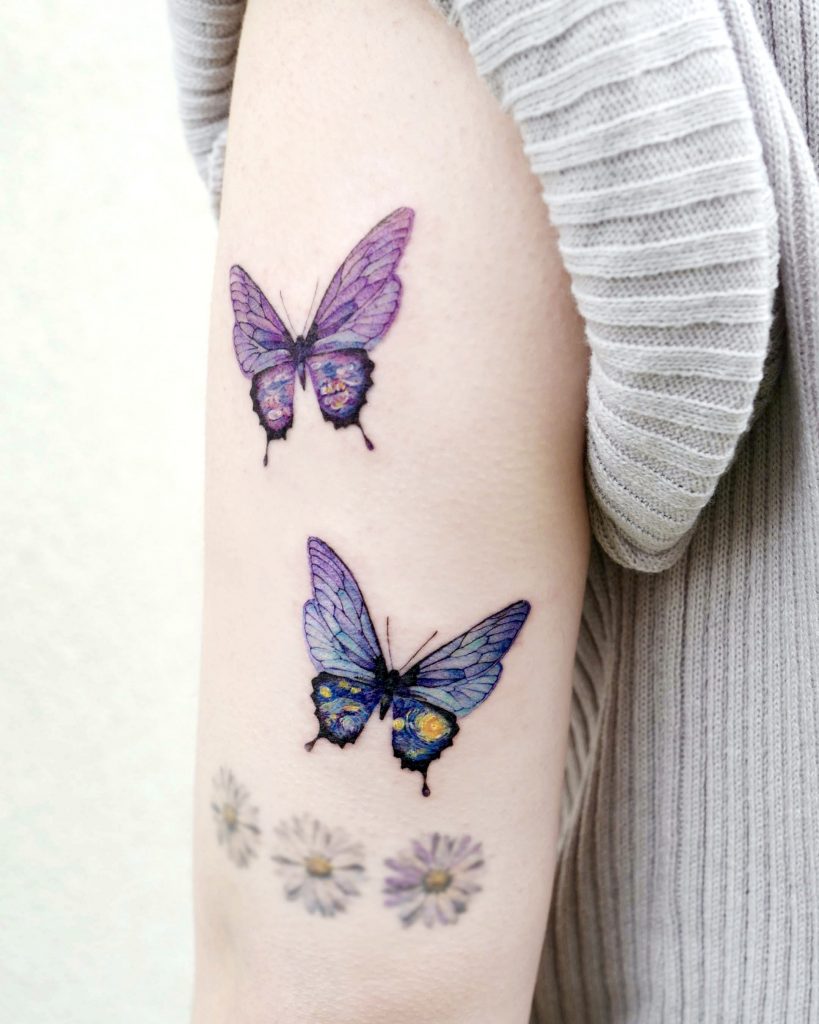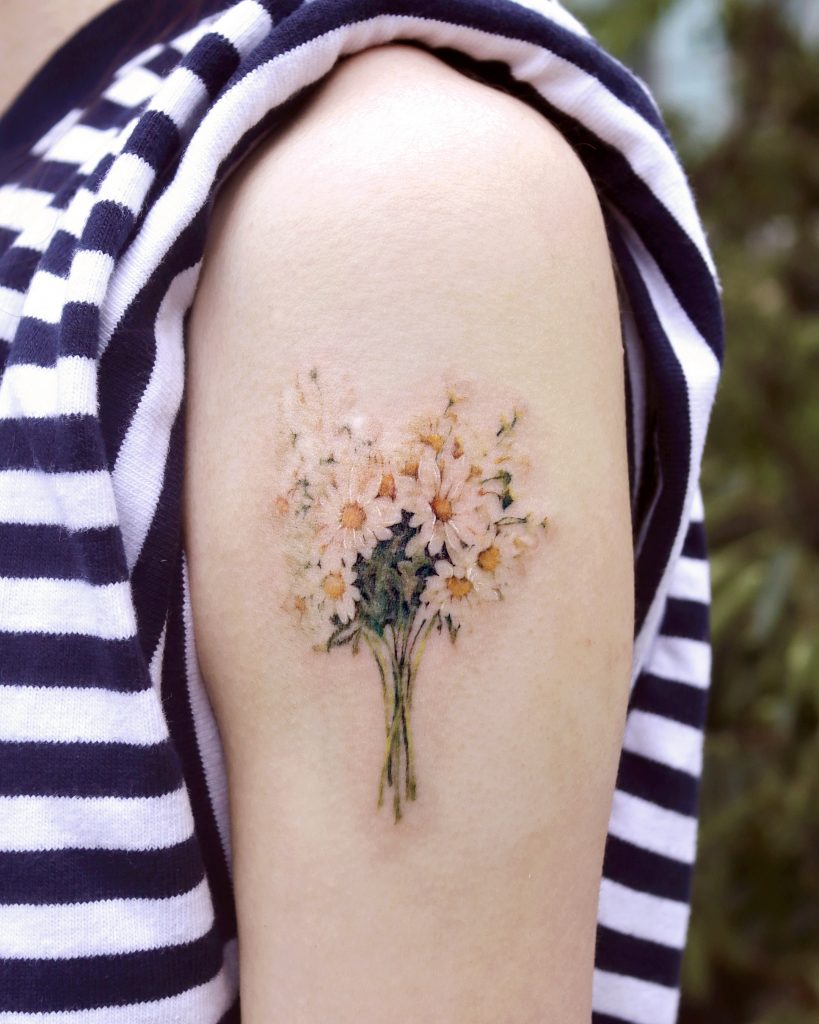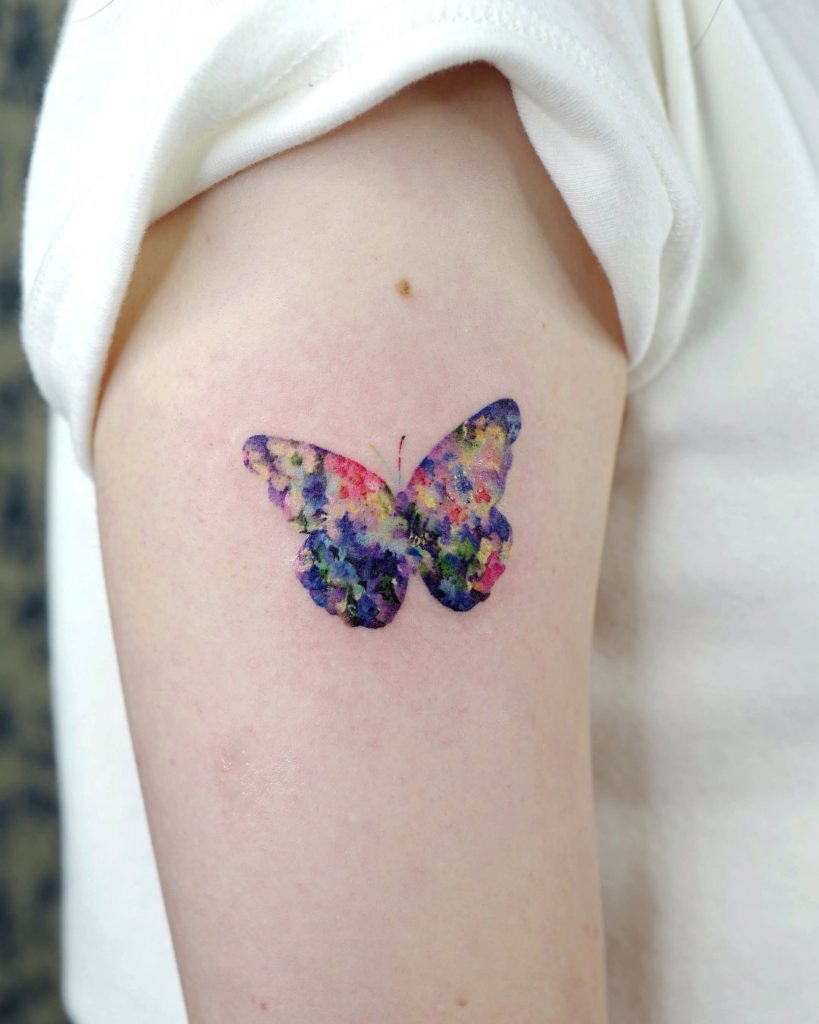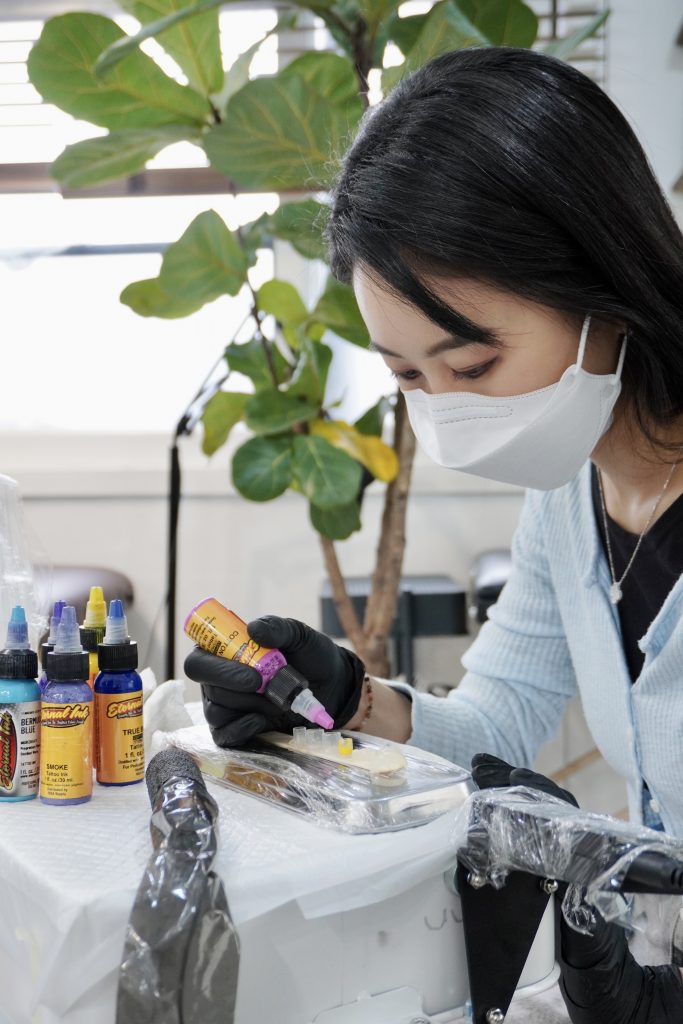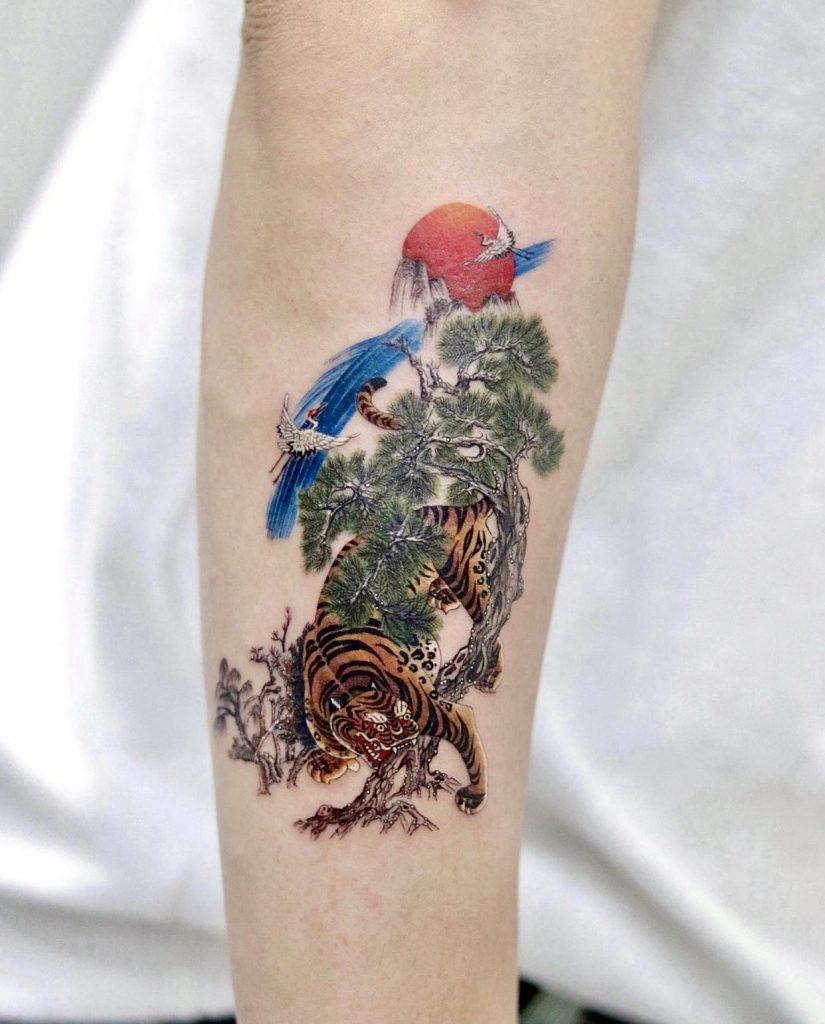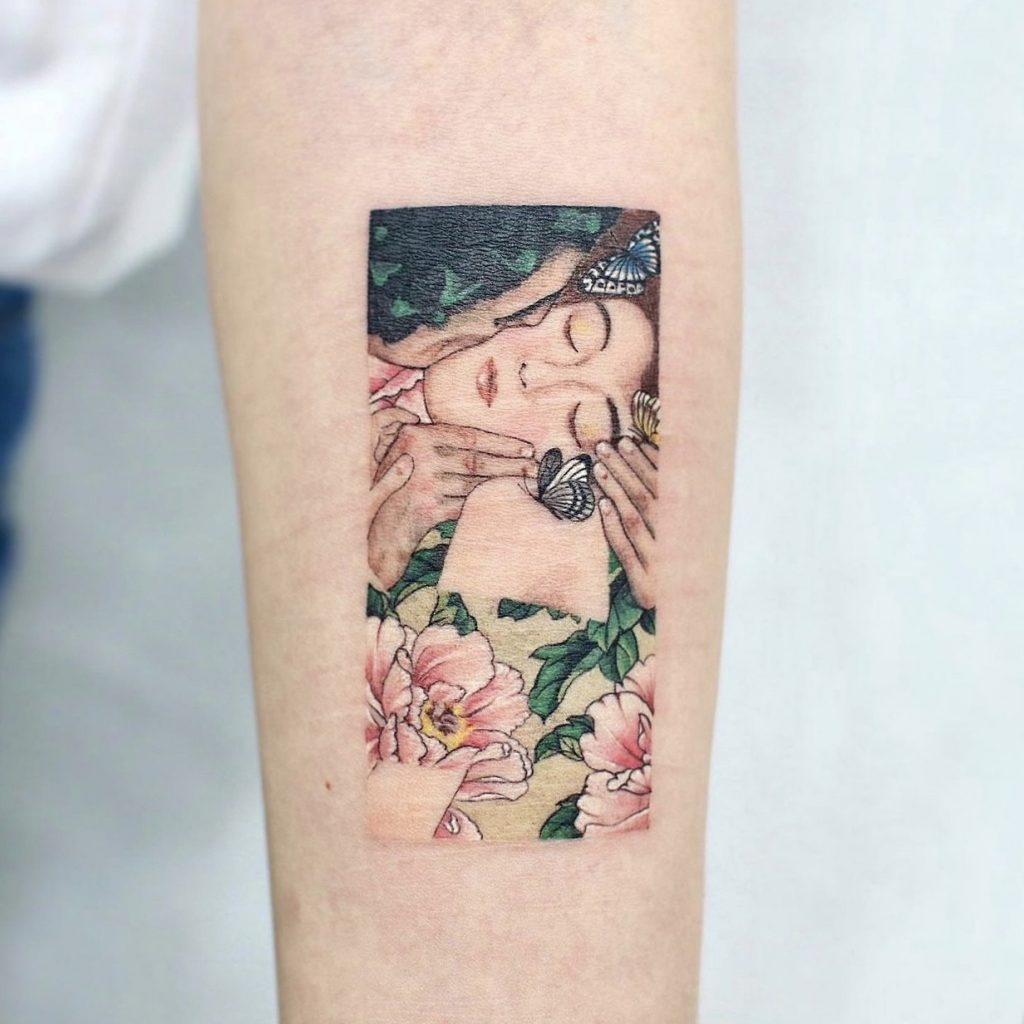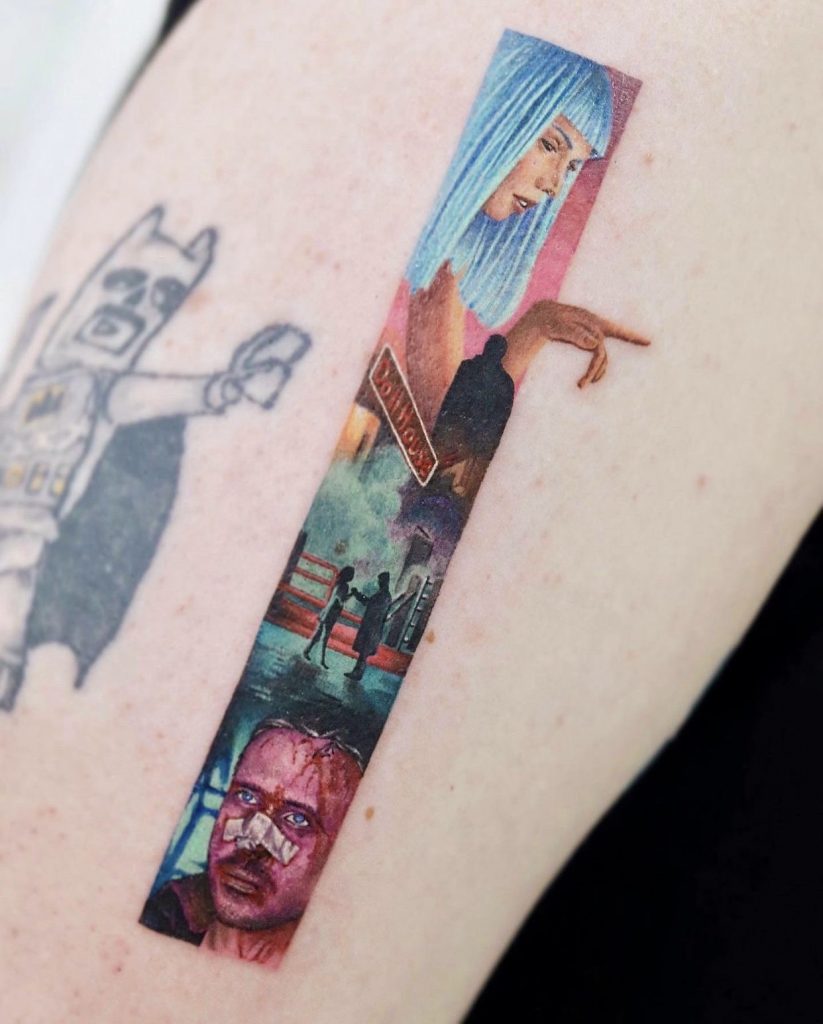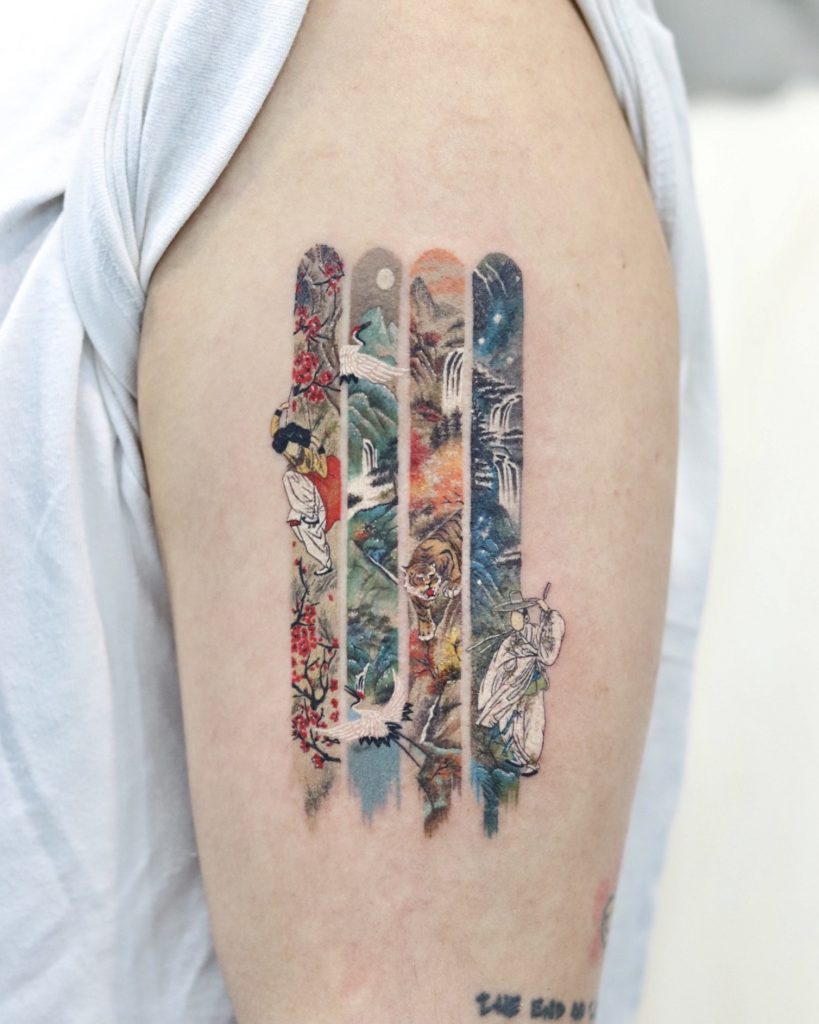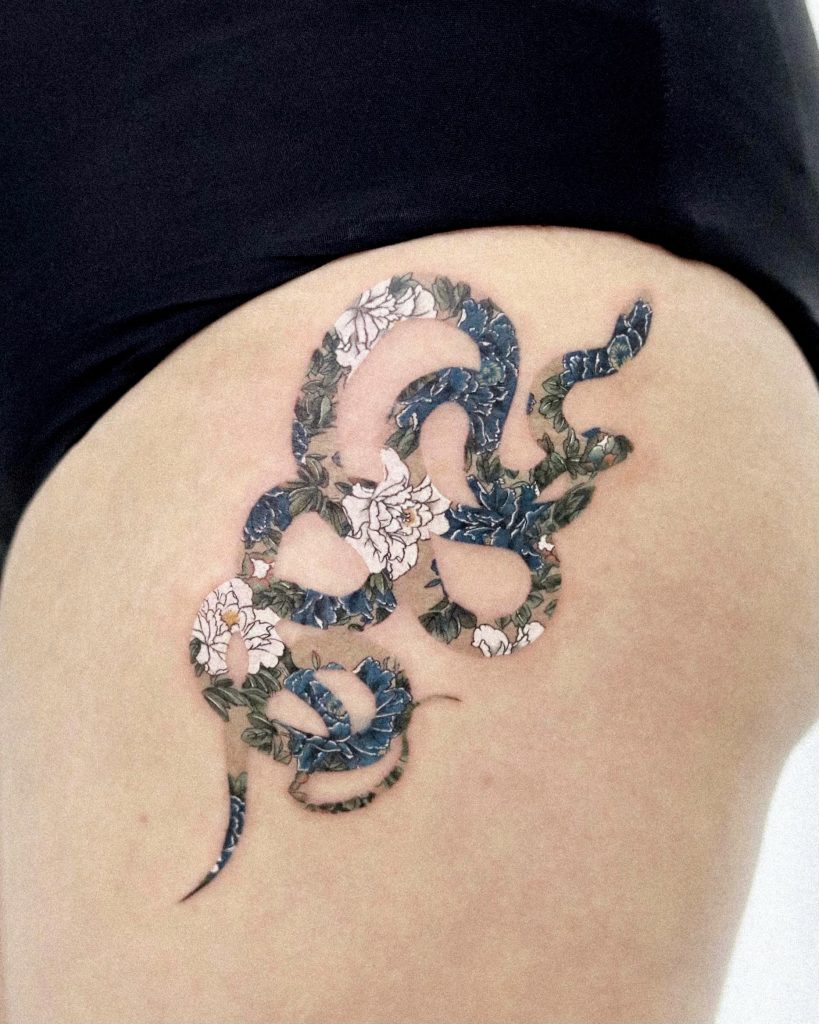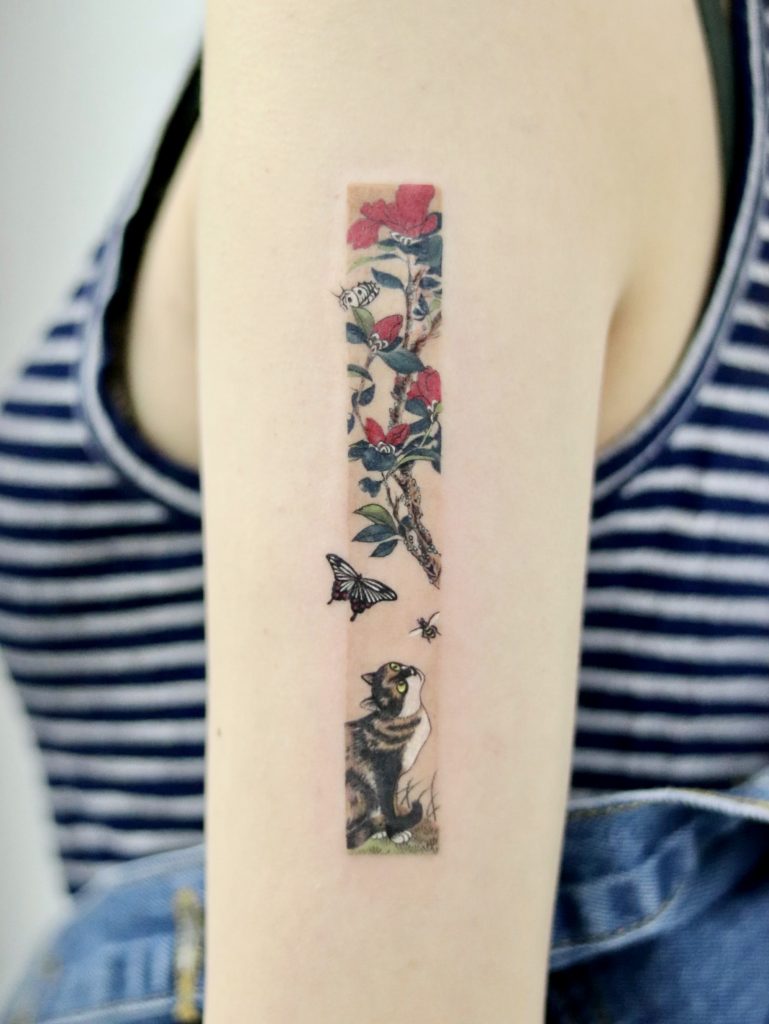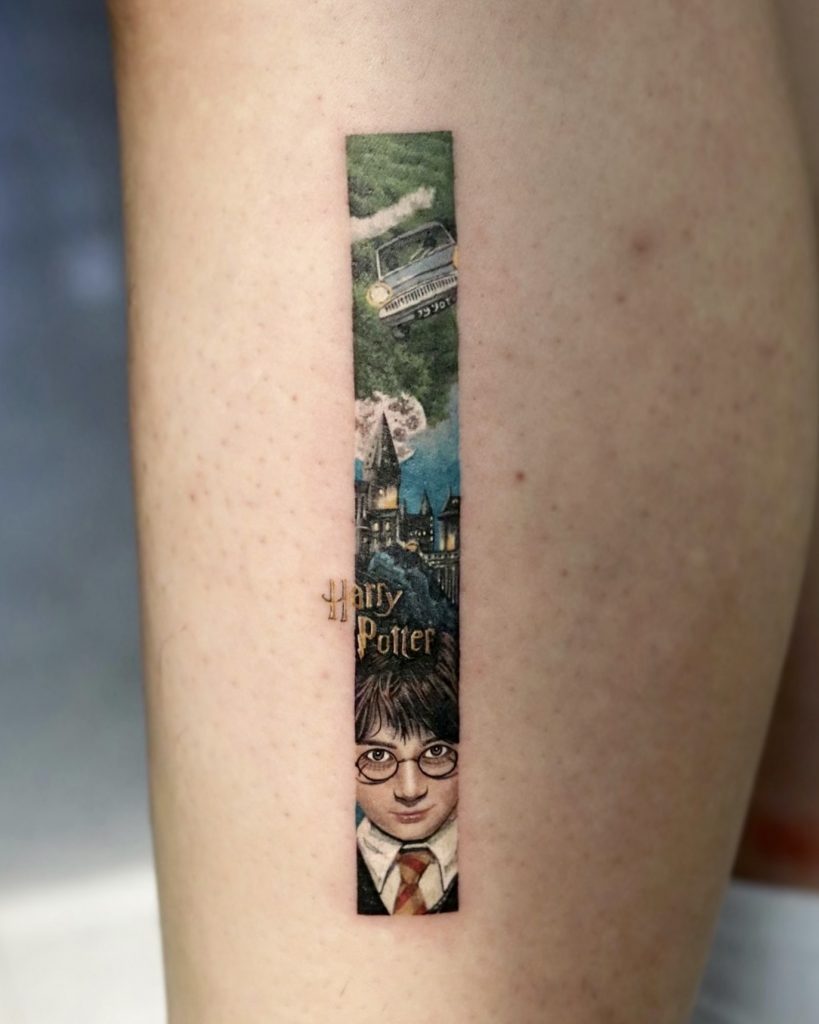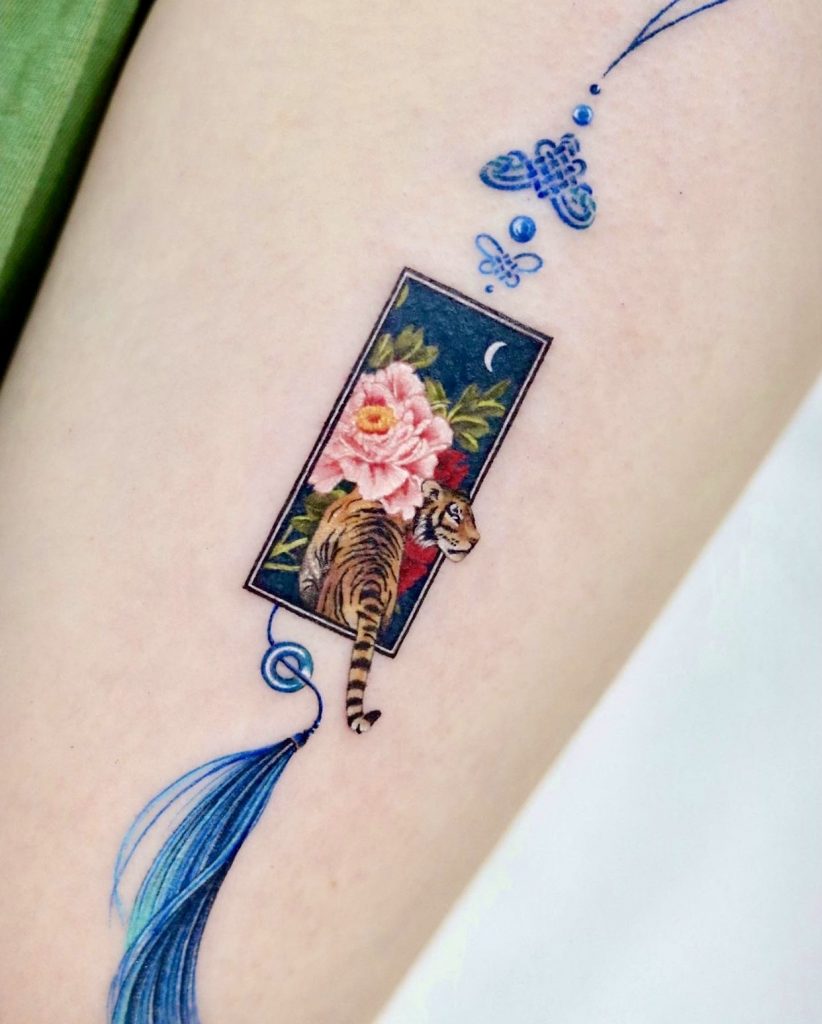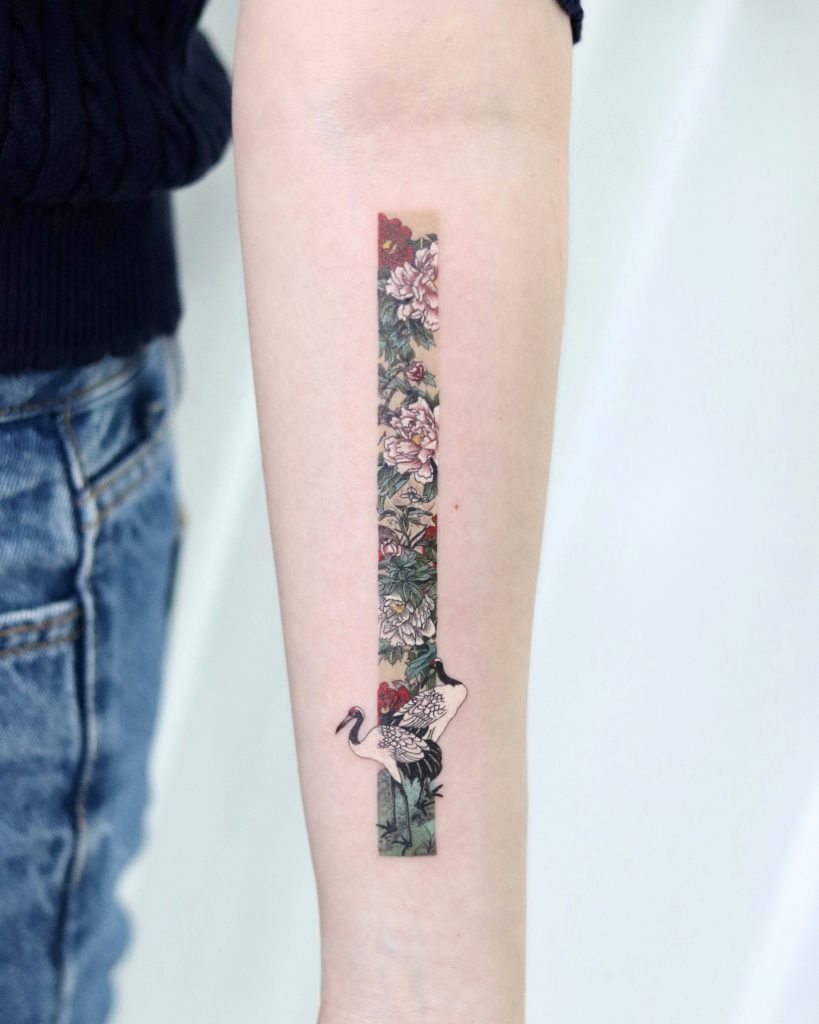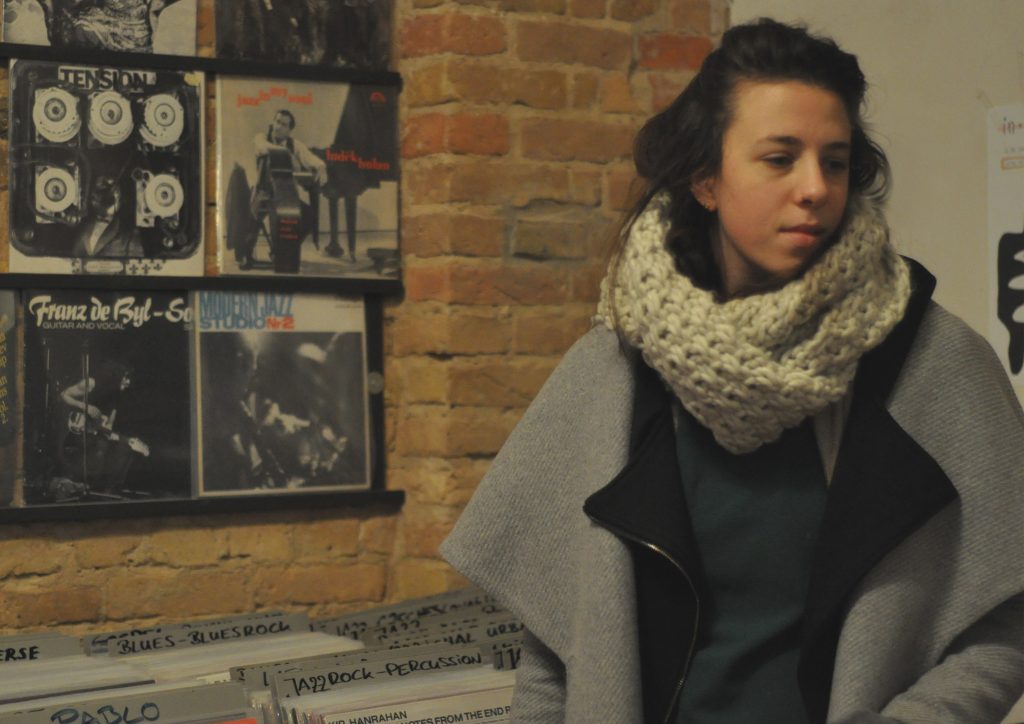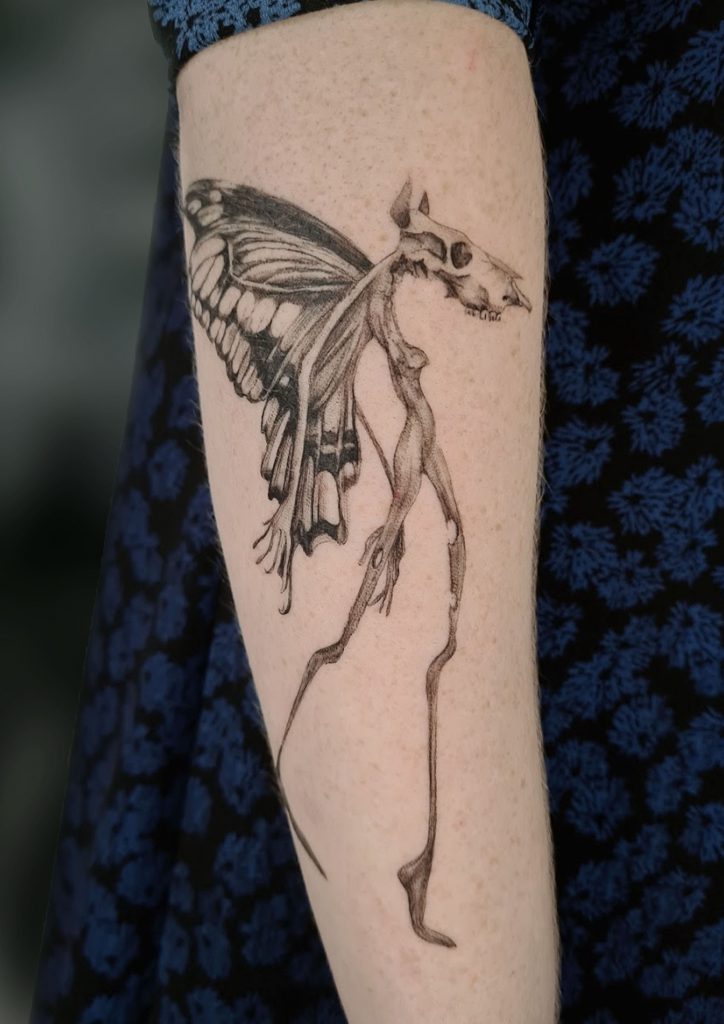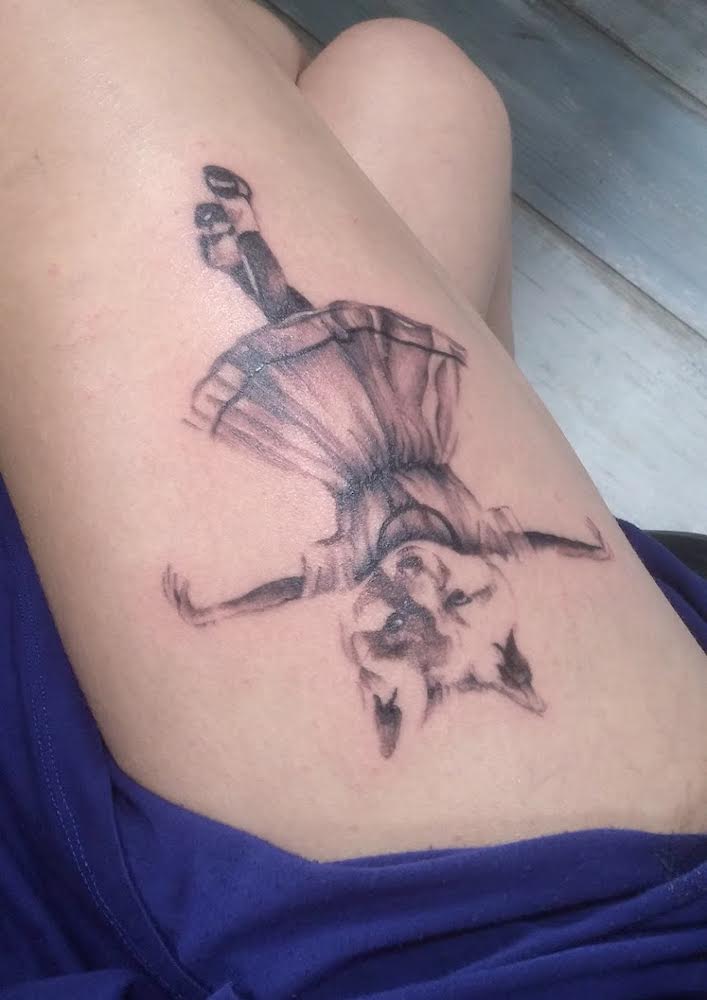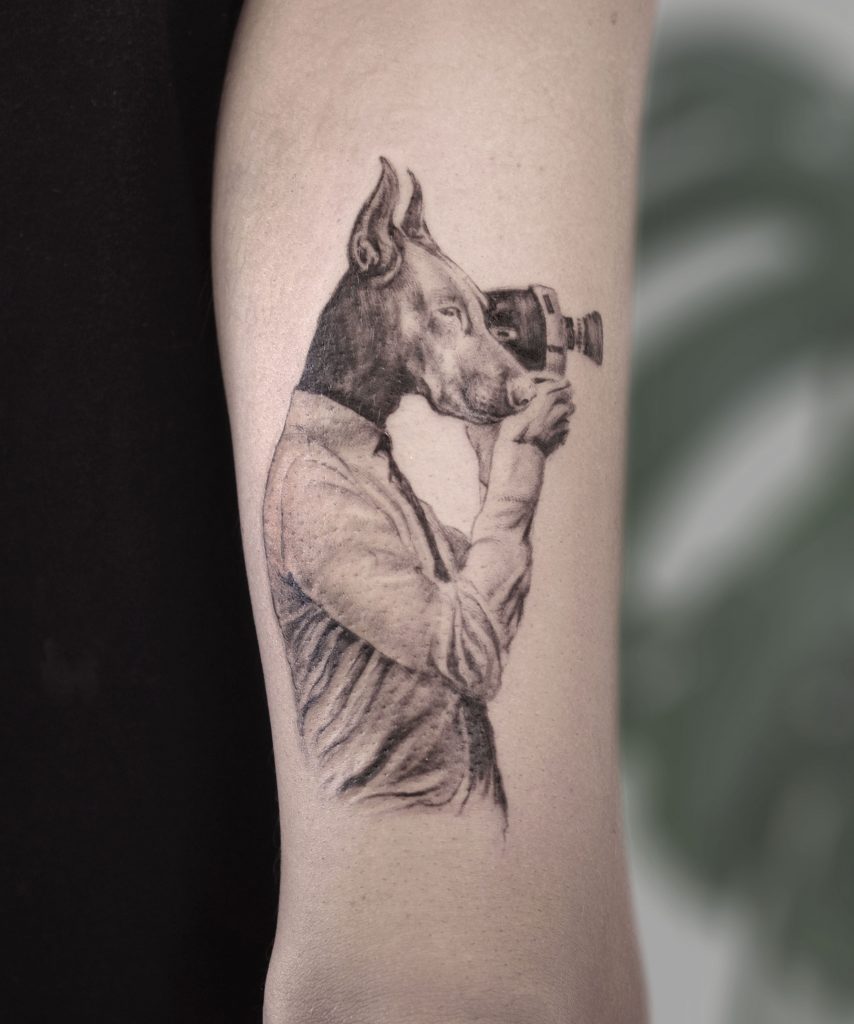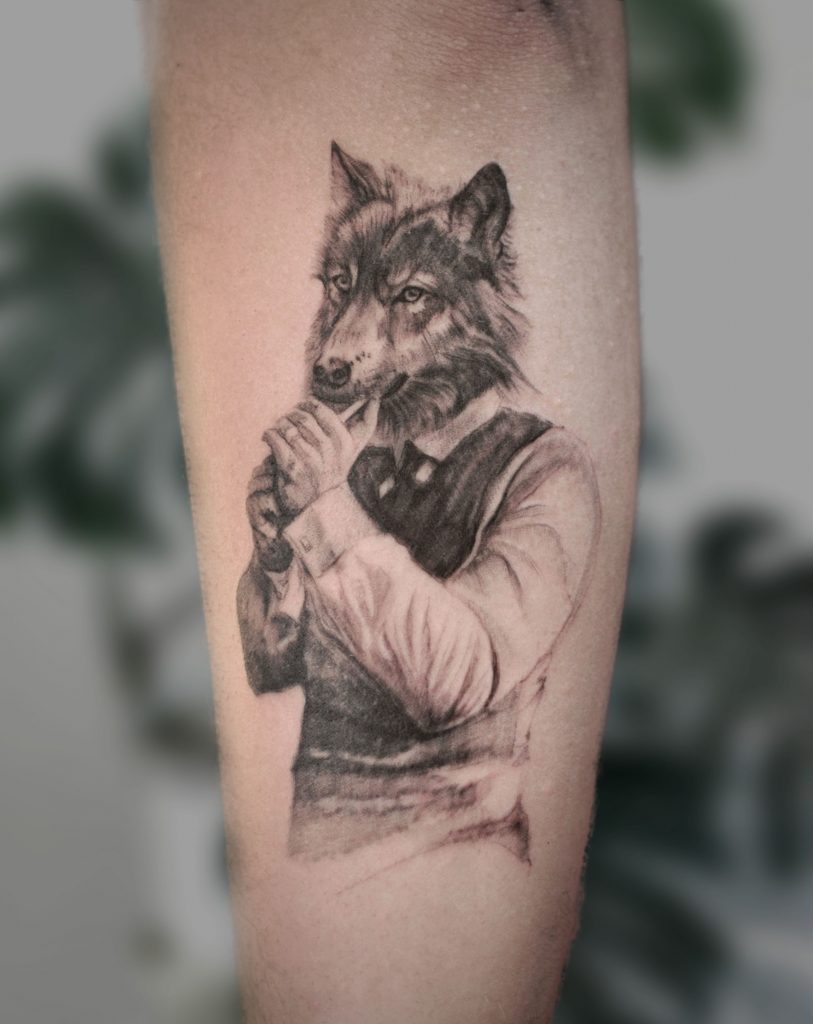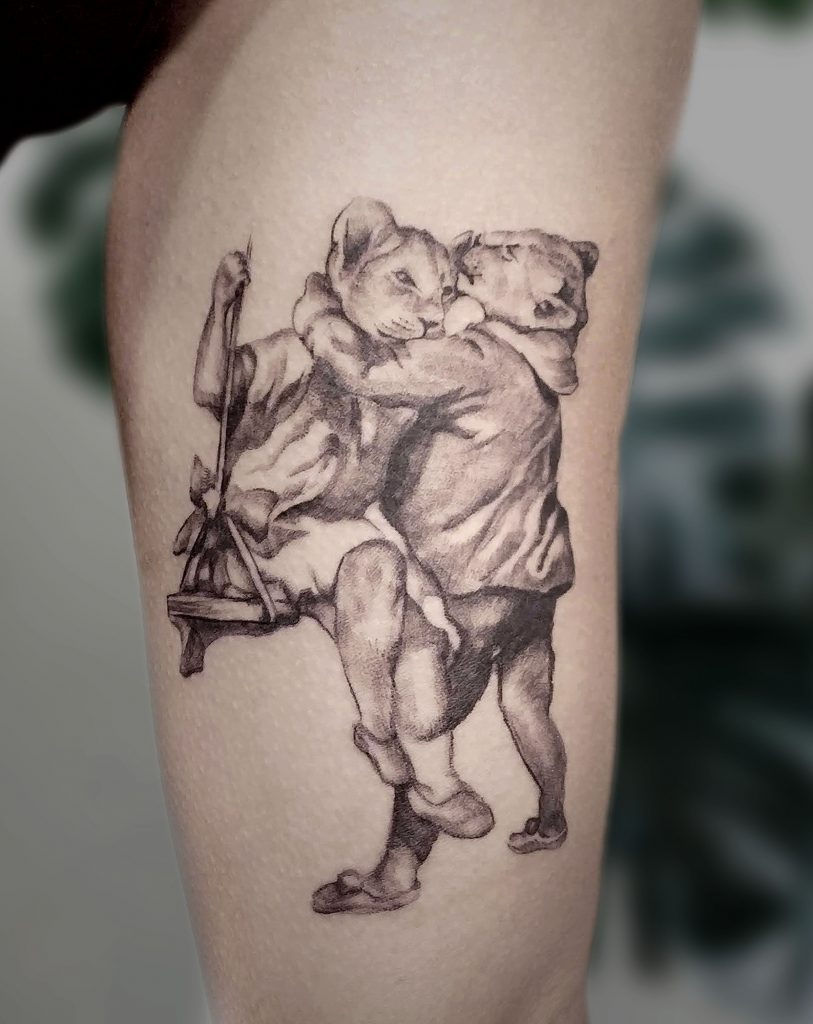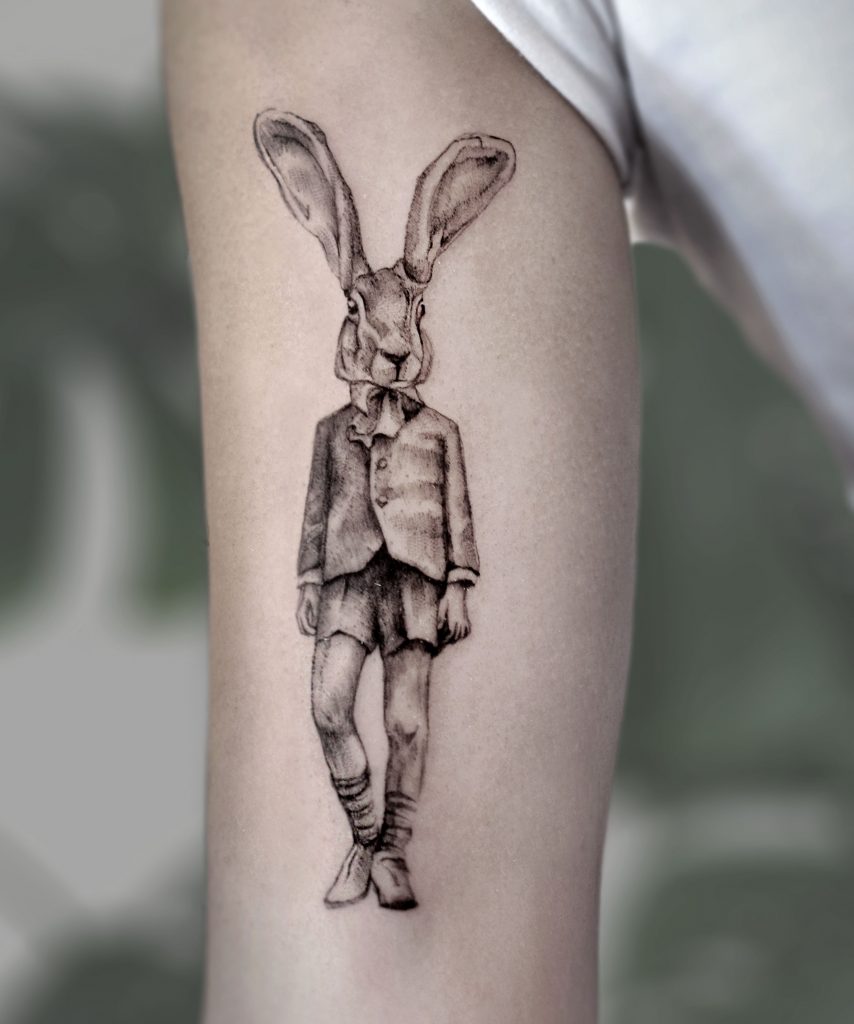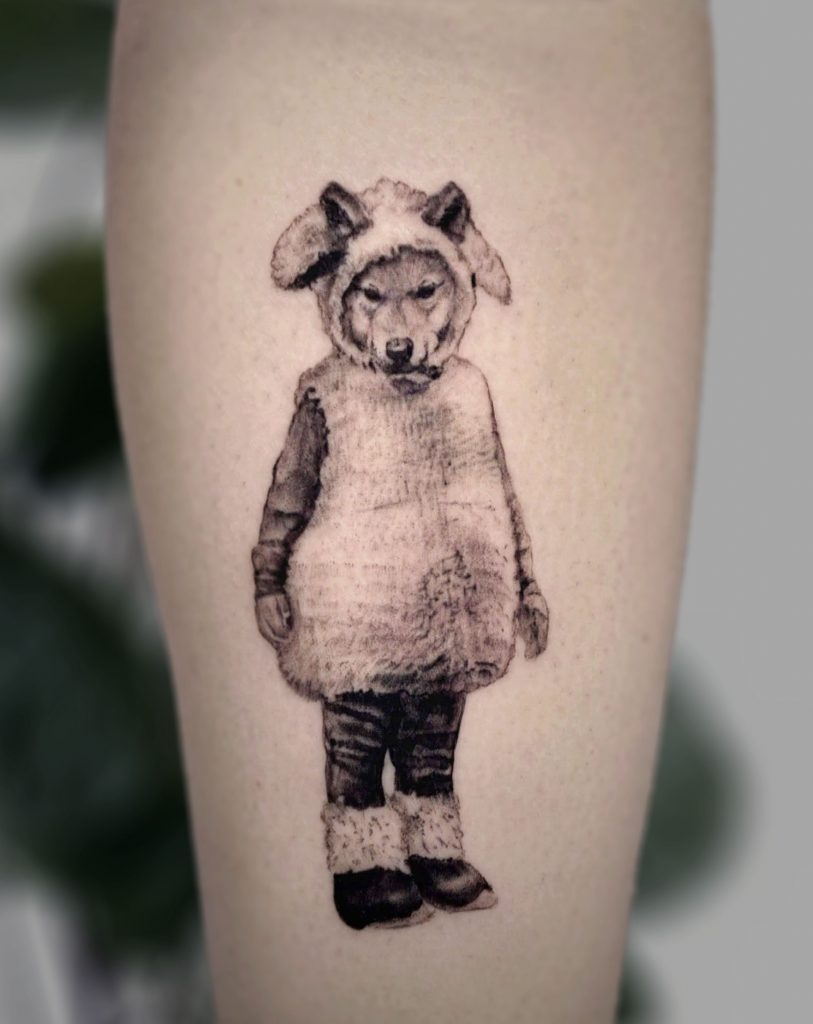Fluffy Tattoo creates the cutest mix of floral and animal tattoos we have ever seen! Working at Studio by Sol in Seoul, Korea we chat to the tattoo artist about the inspirations behind her tattoos and how she became and artist…
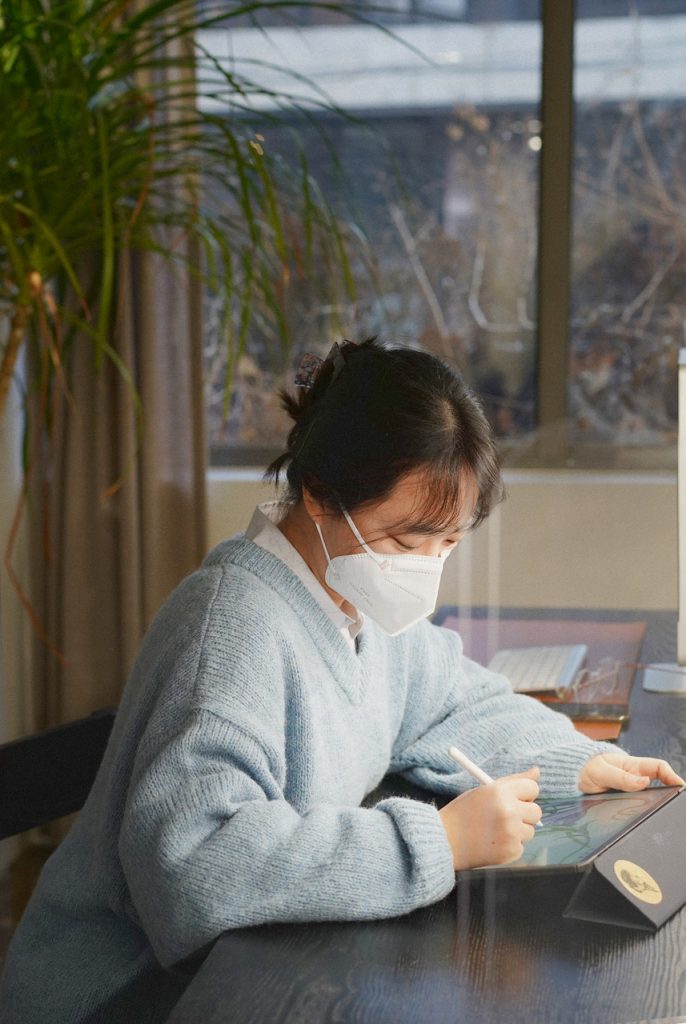
How long have you been tattooing and how did you become an artist? It will be exactly two years since I started tattooing in June this year. I’ve always liked to draw ever since I was a child. There’s someone who’s always drawing, right? That was me.
As I decided to go to an art university, I started to learn painting with earnest. After entering university I majored in crafts, especially pottery. However, I preferred the process of painting on top of the pottery rather than making it. After graduation, I started to work as a designer while drawing as a pastime, but I felt that it wasn’t for me. I decided to become a tattooist because I wanted to draw again.
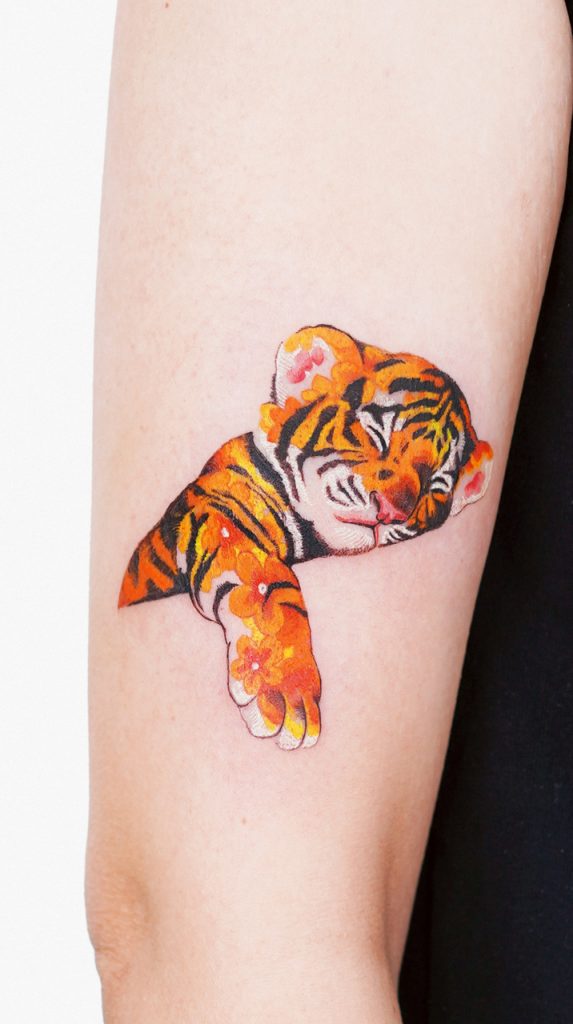
What’s your favourite thing about being a tattooer? That people like my drawings. I feel happy that so many people like my style and tattoos. The reactions when I show the results of our tattoo session to my clients makes me feel good .
Can you tell us about your experiences in the tattoo industry? After years of working as a tattooist, I think tattooers are comprehensive artists. Tattooists often have to schedule work, take pictures, edit and market themselves, not just draw pictures.
There have been so many differences between watching the tattoo industry when I was outside of it, and seeing it inside its boundaries. At first, I thought it was difficult because of these differences. I wasn’t used to dealing with customers or taking pictures. But now I think of all this as being part of a tattooist.
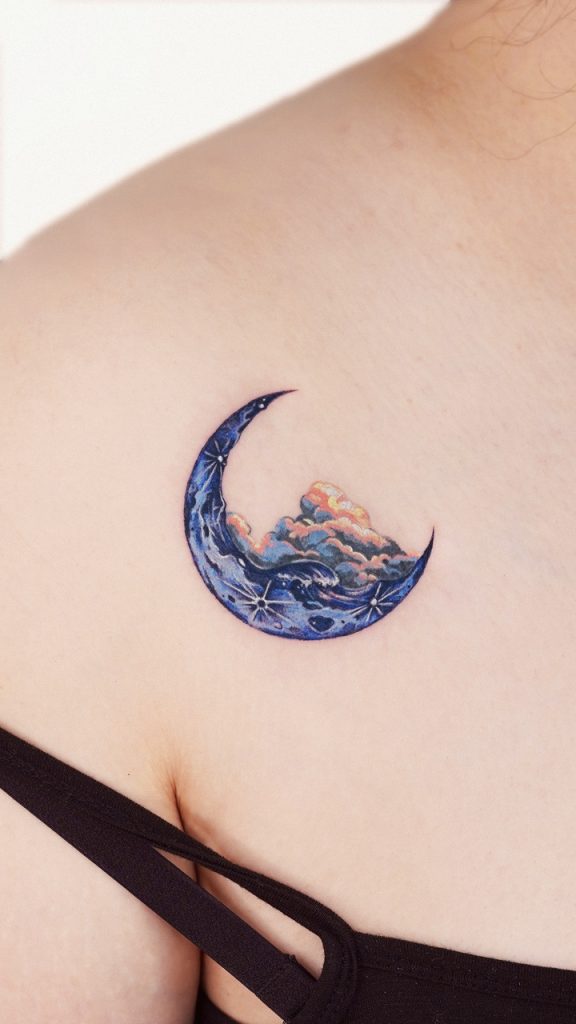
How would you describe your work? Every one of my tattoos is a small world in itself. There are stories to be found in my little works. Most of my tattoos are cute or beautiful and I always try to put a special meaning in them. Most people want to express themselves with tattoos or have them contain stories. Customers also give the tattoos I make for them meanings that even I don’t think of.
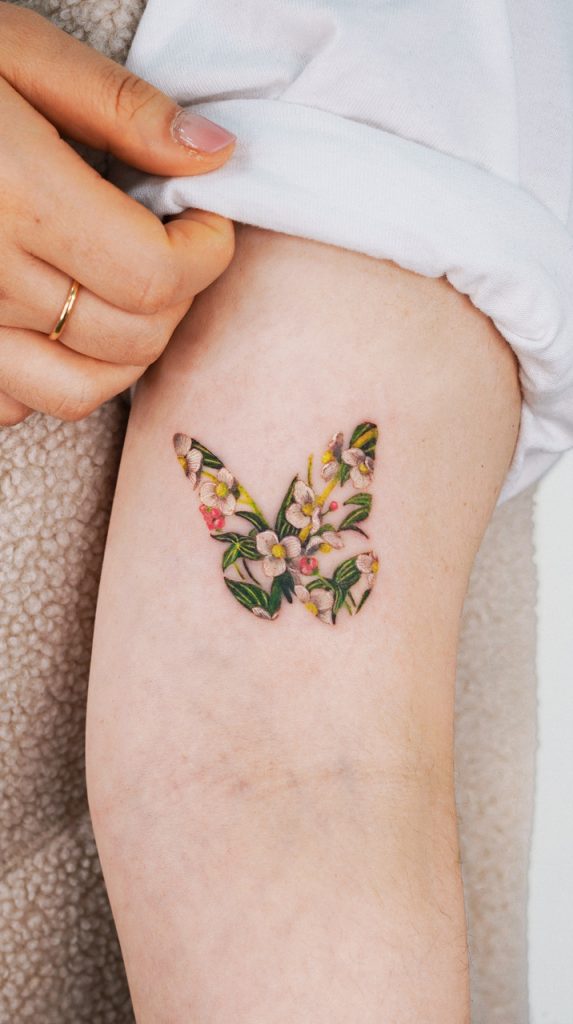
You’re open to doing cover-up tattoos, can you tell us more about this? I do about four or five cover-up tattoos a month. My customers usually want to cover their existing tattoos with flowers, animals, the moon and clouds. Cover-ups are more difficult than general tattoos. Not only do I need to cover previous work in a natural and beautiful way, but I also have to pay attention to any damage to the skin. They’re just as interesting as the other tattoos I do and I love that my customers are always very satisfied with the new tattoo. I feel very proud of them.
What would you say to someone wanting a cover up tattoo from you? If you want to get a cover-up tattoo, you must read the cover-up precautions beforehand. Since the cover-up isn’t magic you need to consider that the size and colour can’t be as diverse as a regular tattoo can be. This is because tattoo ink cannot put bright colours over dark colours. Plus, the cover-up design should be larger than the existing tattoo. I make an appointment after the customer has thought about these things.
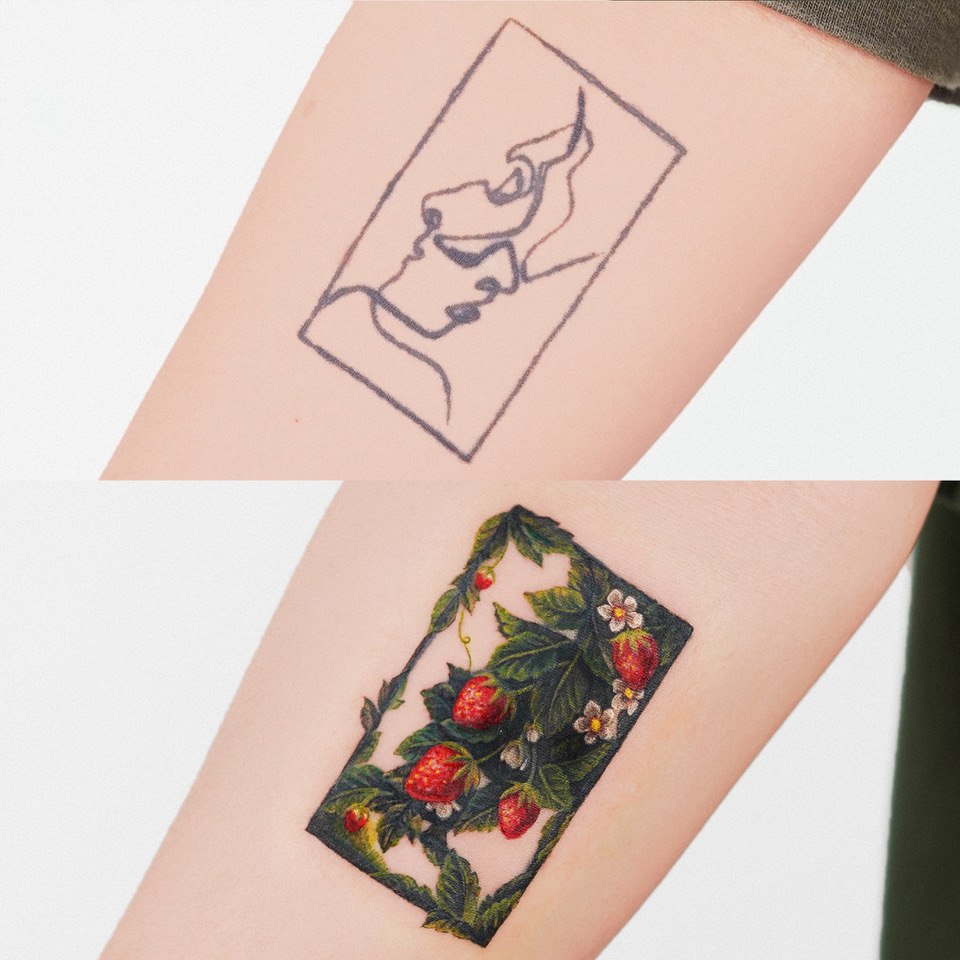
How do you feel covering and updating another tattooer’s work? I’m not conscious of the tattooist who gave my customers existing tattoos. I just focus on the needs of my customers. I see so many people get cover-ups because their tattoos smudge or the previous tattooer has messed up a lot. But, there are some people who cover them because their tastes change. Therefore, I’m open to someone who has been tattooed by me having my work covered by someone else.
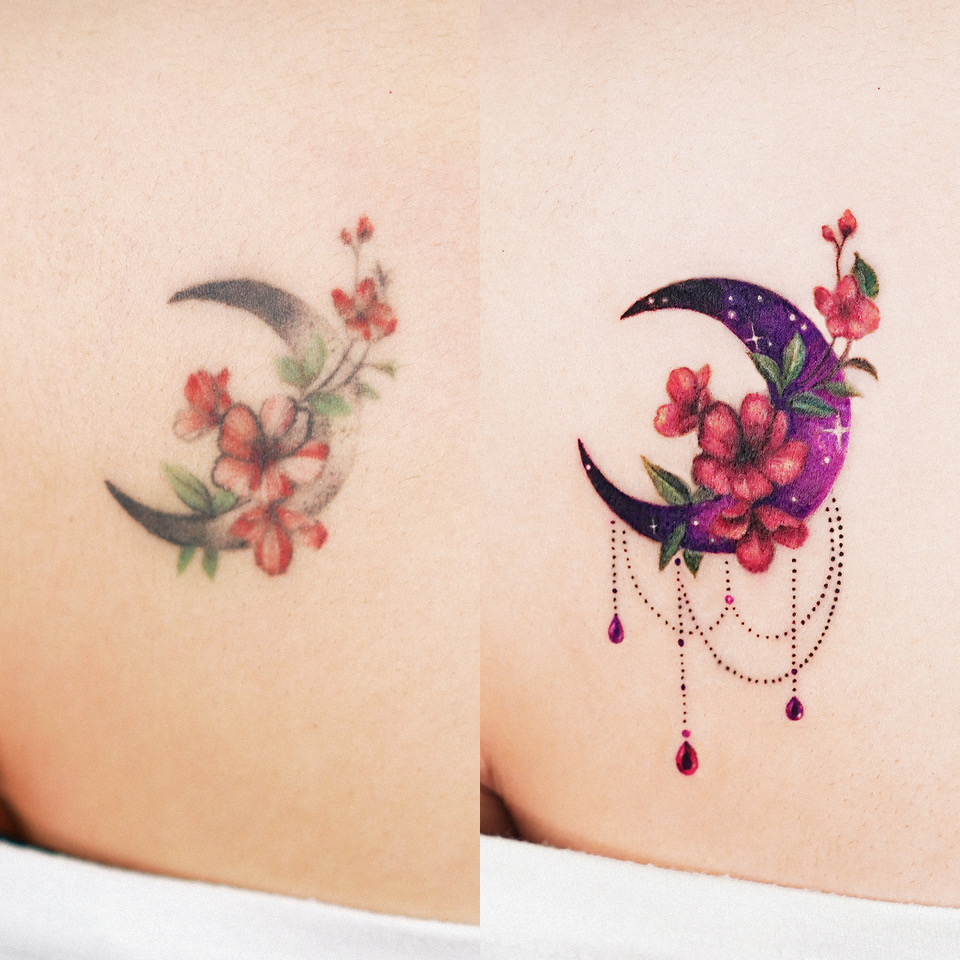
What inspires you? Everything around me. Of course, nature is my greatest inspiration, especially as natural things are always around us. The changes in seasons and temperatures, the flowers and animals I’ve seen along the road and new scenery on trips inspire me.
Can you tell us about the process behind your tattoos? The first thing I do is draw a design and almost every day I upload one on Instagram. So, in fact, even when I’m not working on tattoos, I keep drawing and editing photos to upload. When the design is sold through Instagram the appointment date is set. I then prepare a stencil, guide customers on placement during our consultation and finally tattoo them.
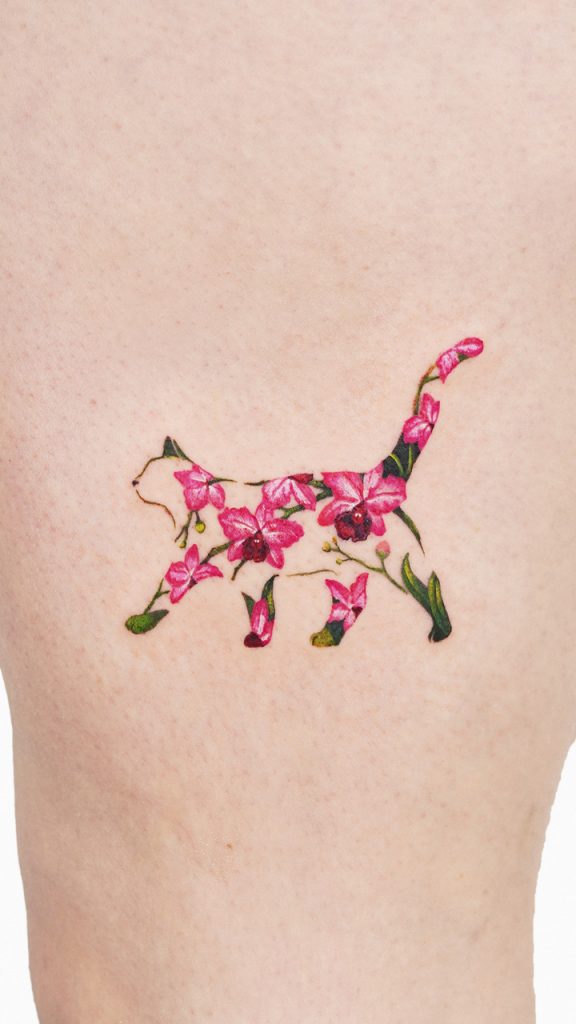
What do you like to tattoo and what would you like to do more of? These days, the combination of animals and flowers is the most interesting to me. These tattoos are small and delicate and they take a lot of time. But, it’s always fun when I’m working on these. I do, however, want to draw and tattoo bigger pieces.
Can you tell us about your own tattoos? Are you a tattoo collector? I have eight tattoos on my body. Three small doodle tattoos, three plant tattoos, a goldfish tattoo and my cat tattoo. Two of them were given to me by my tattoo teacher, Soltattoo. After I got a few tattoos on my body, the style I wanted became clear. But I don’t think I have enough to say I’m a tattoo collector maybe after another two or three tattoos.
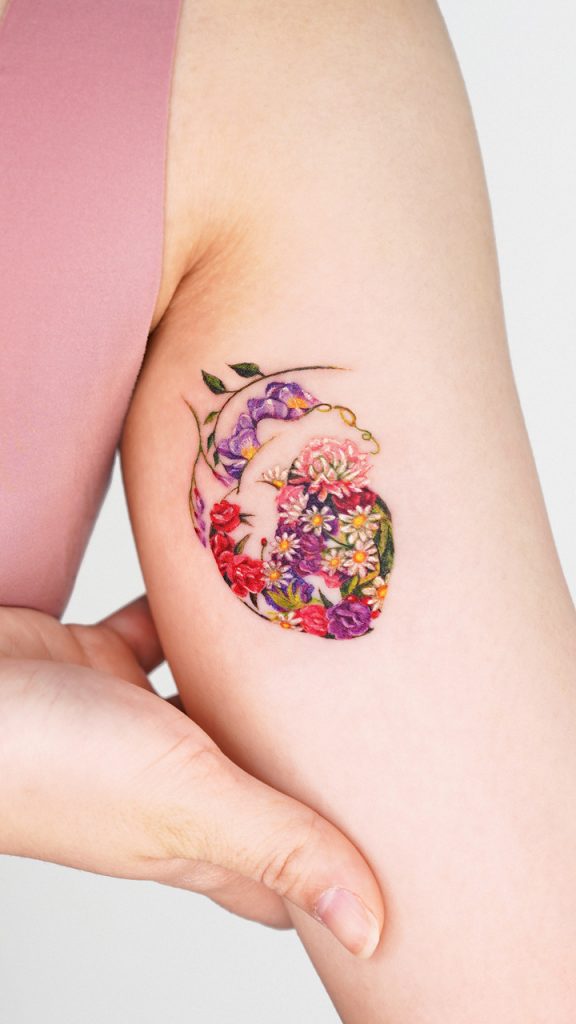
How does it feel making tattoos in Korea when they’re still illegal? I always feel like I’m carrying a certain amount of anxiety. Before I became a tattooist, I hesitated because it was illegal. That’s why I’m always cautious. Now I’m used to the anxiety, but I hope it becomes legal soon so that both tattooists and customers can get tattoos safely.
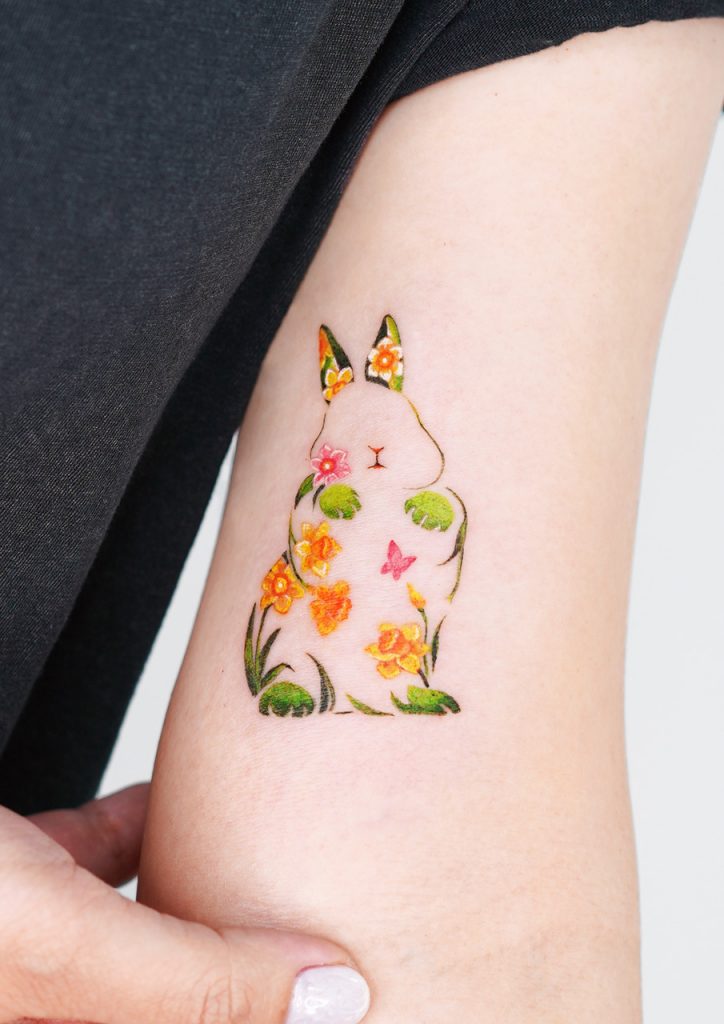
How are tattoo artists seen by society?There are still two points of view. Contrary to the positive perspective of people who enjoy tattoo culture, there is a conservative and disgusting view of tattoos. As a person engaged in tattoo culture, I am still surprised when I encounter people who feel disgust for tattoos, especially while I’m surrounded by people who love tattoos. Most of the older generations still regard tattoos as a symbol of negative attitudes, which is why tattoos are not legalised in Korea.
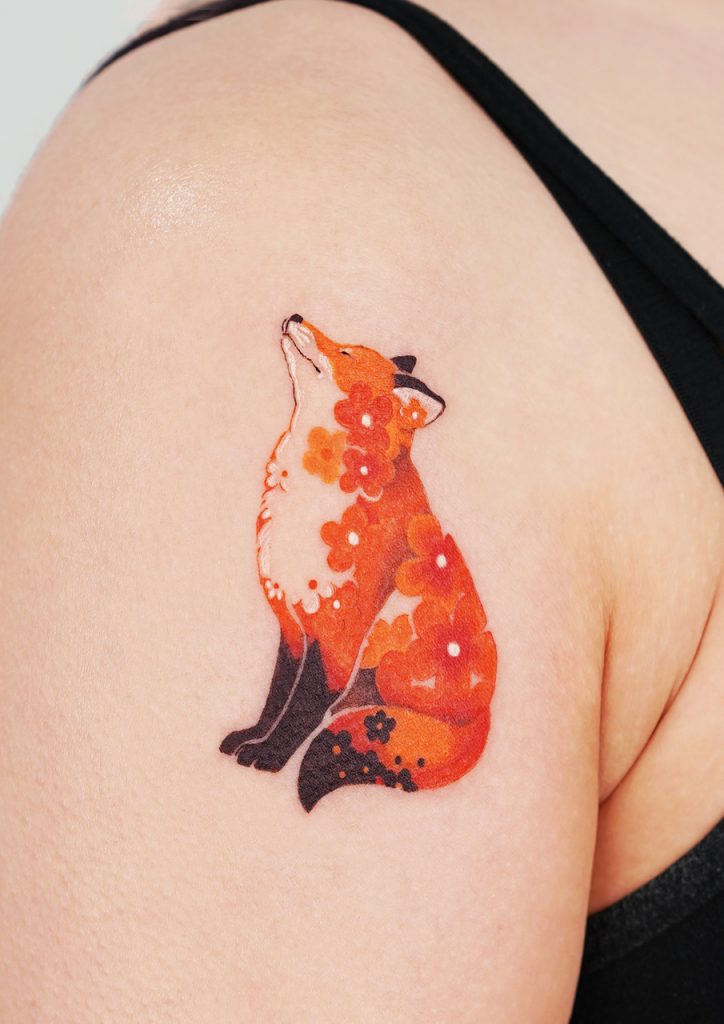
Despite all of this what moment in your career are you most proud of? I’m proud every time that people love my tattoos. I’m glad that I do this job whenever I receive good reviews from customers after tattooing.
Make sure to follow @fluffy_tattoo on Instagram for more adorable tattoos.
